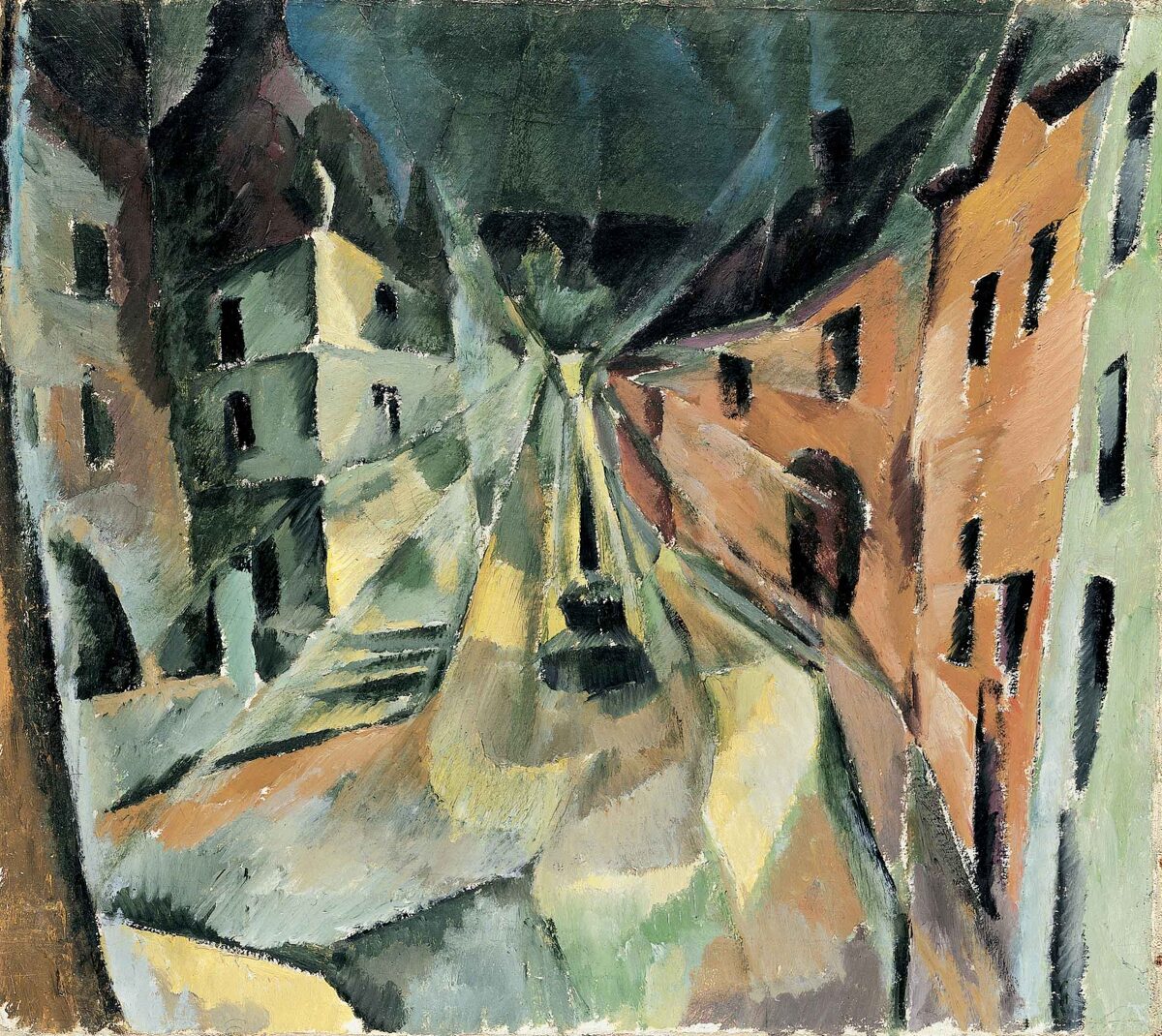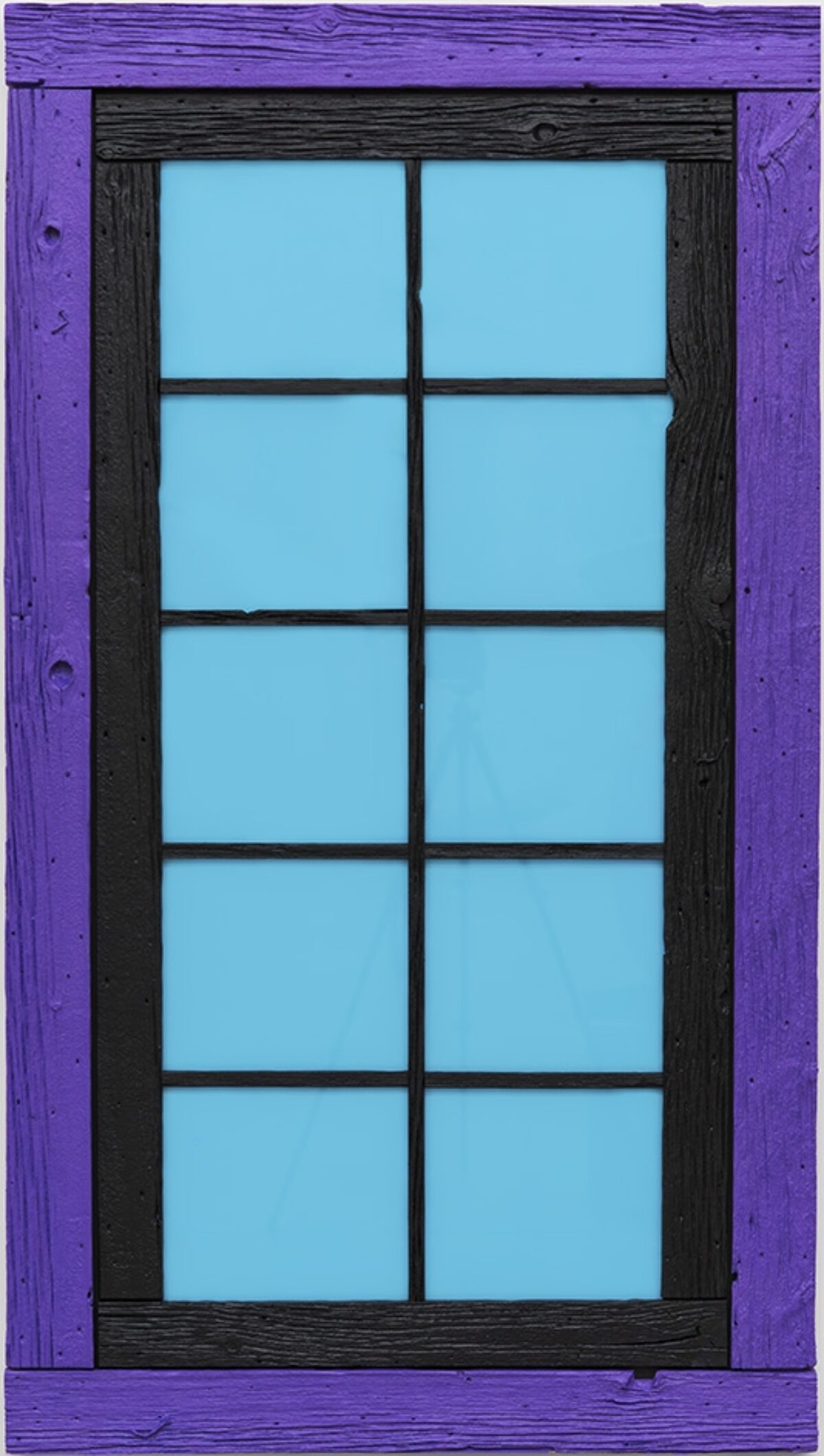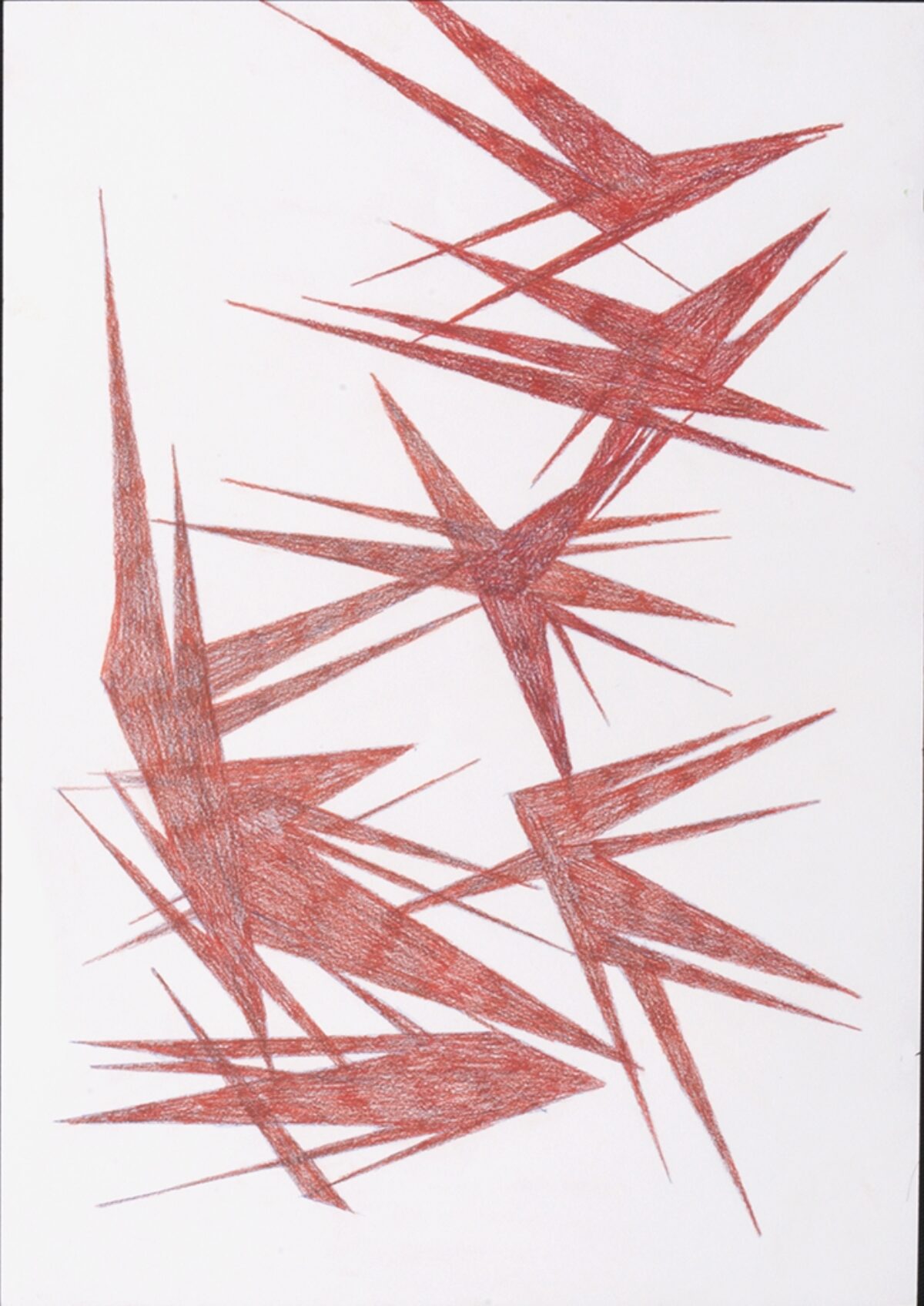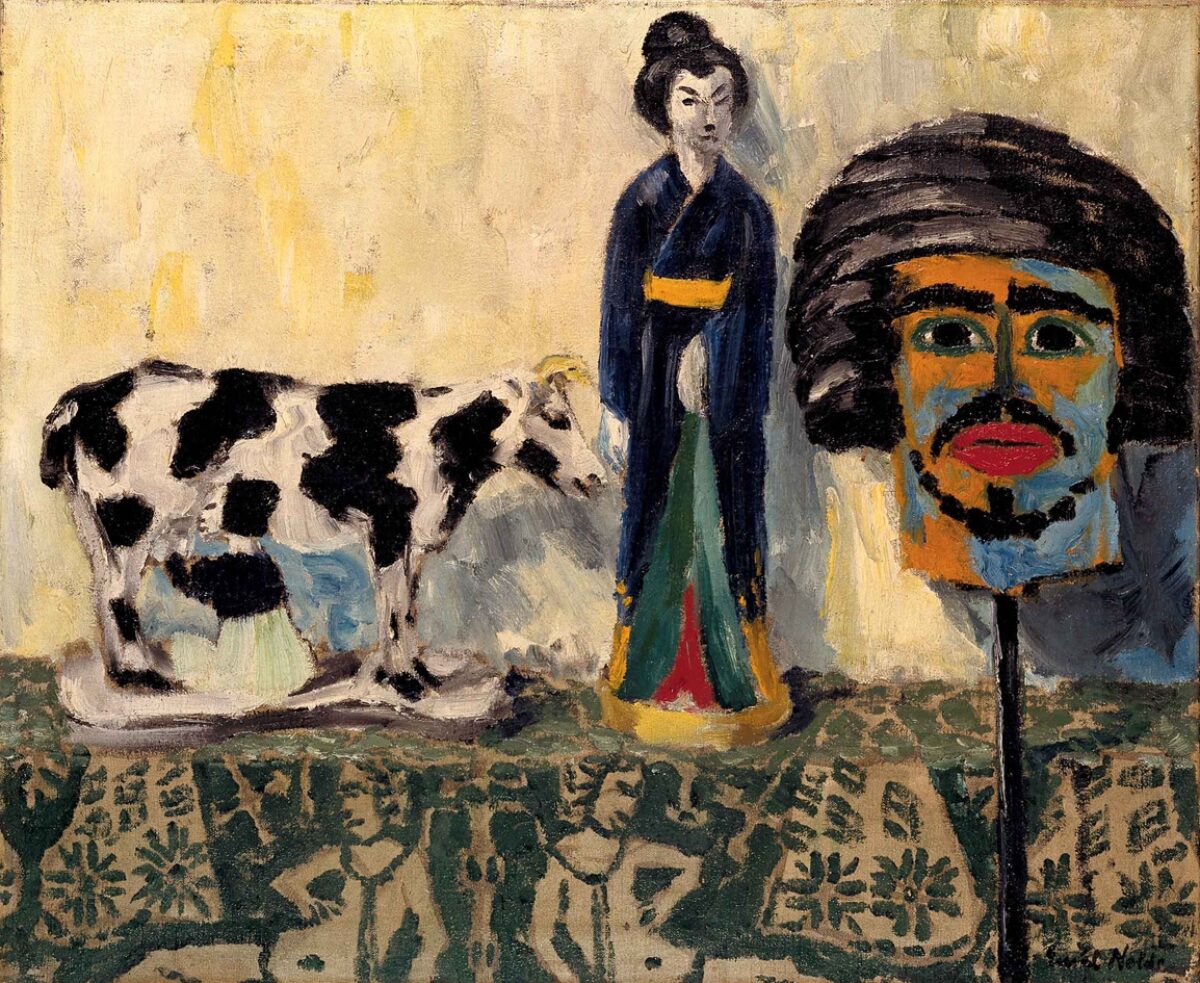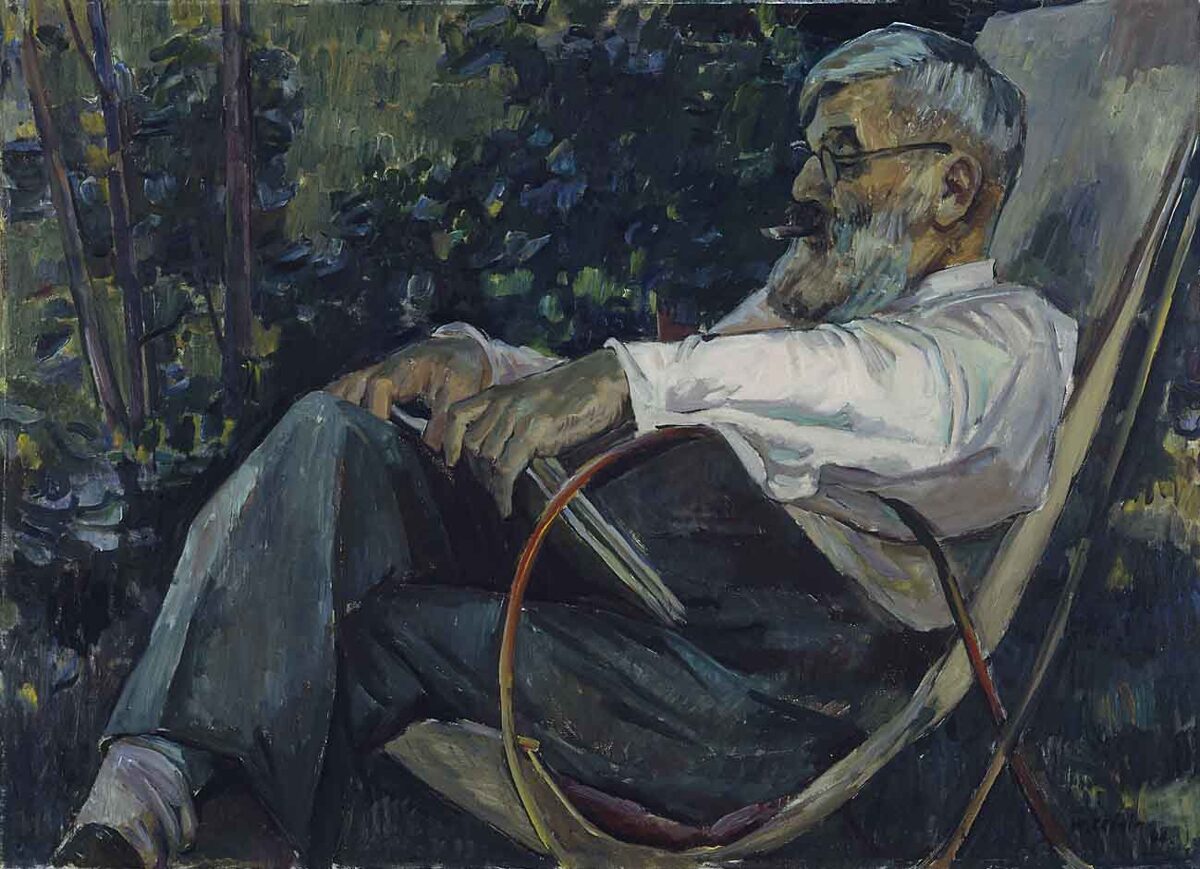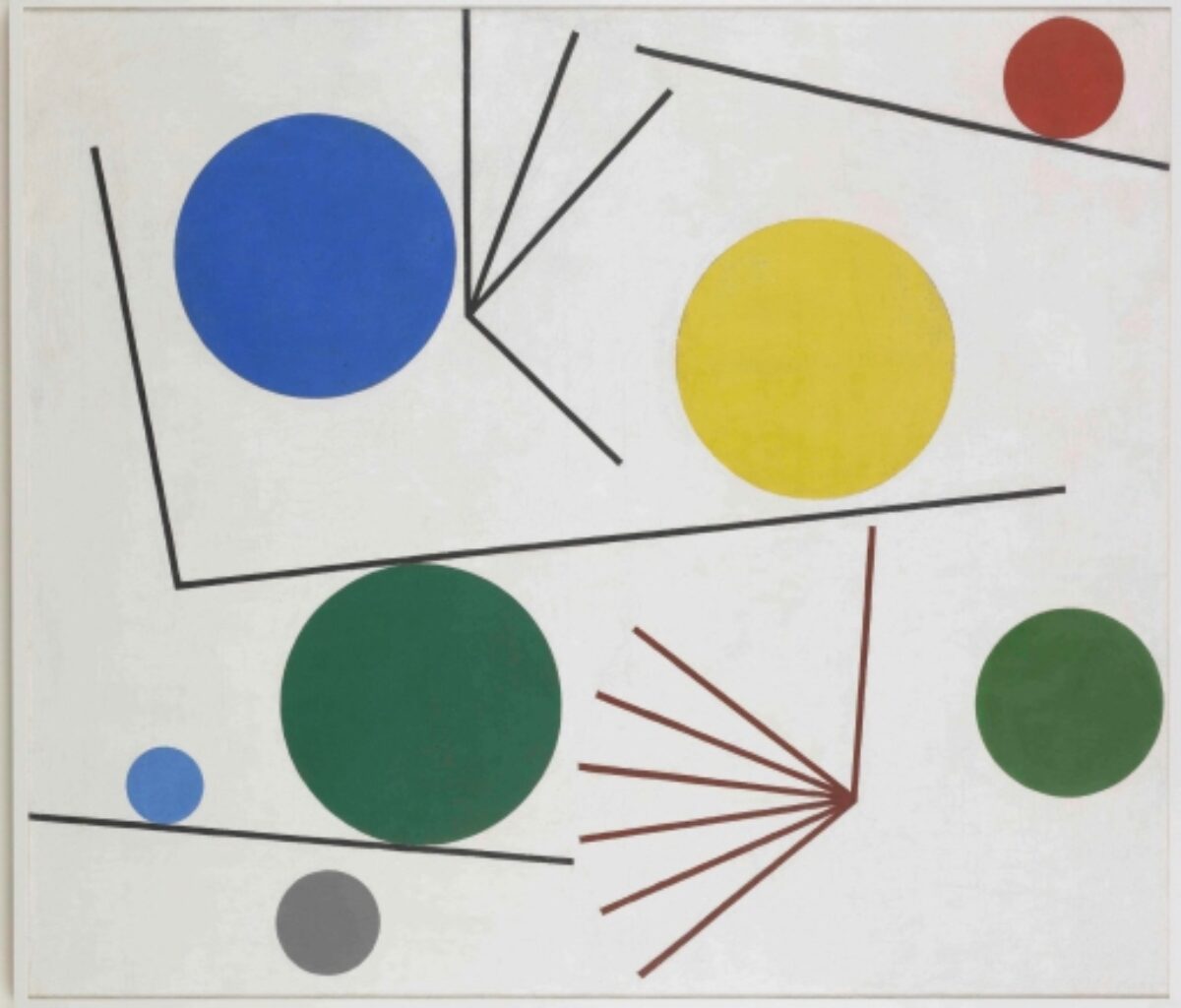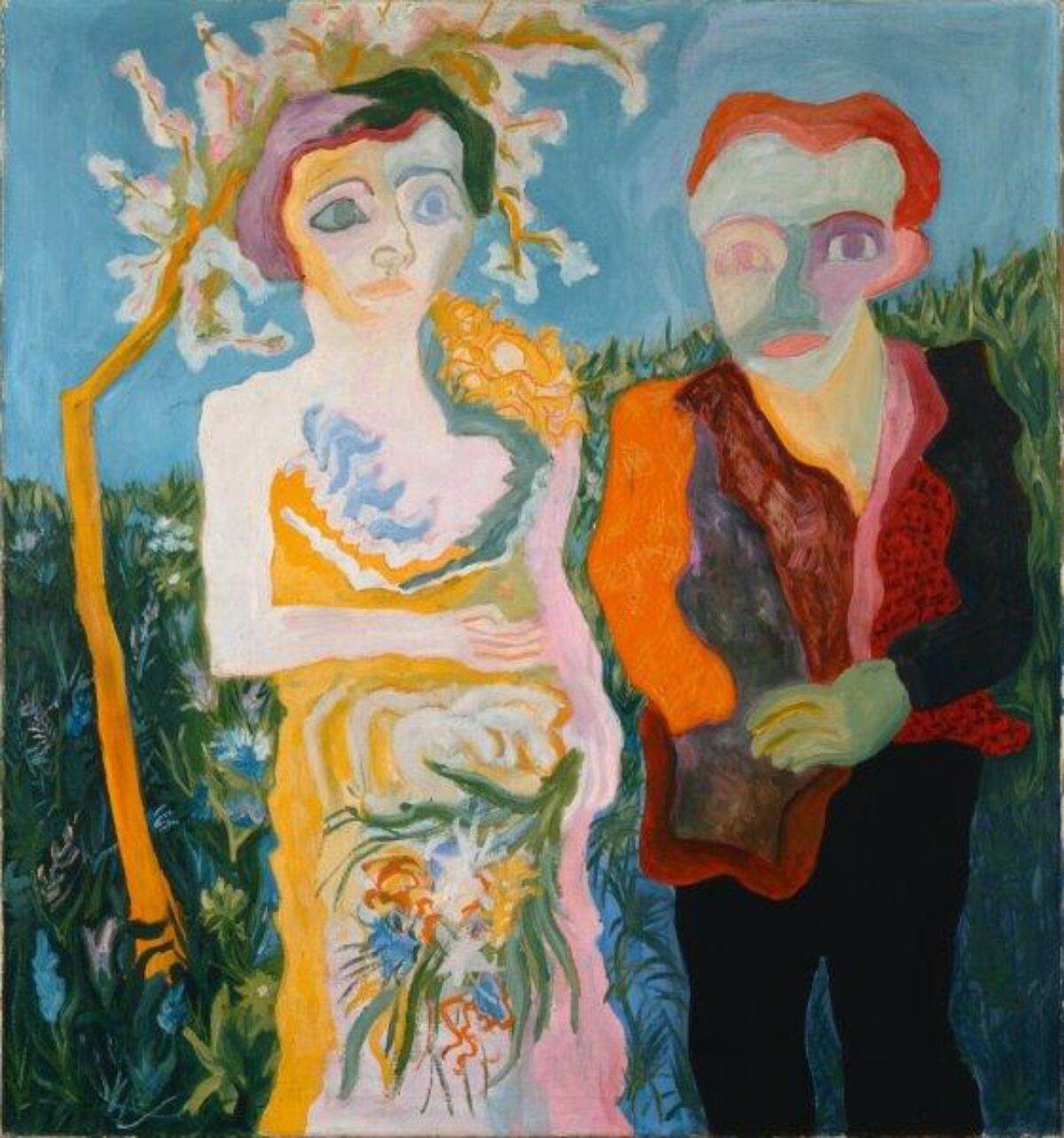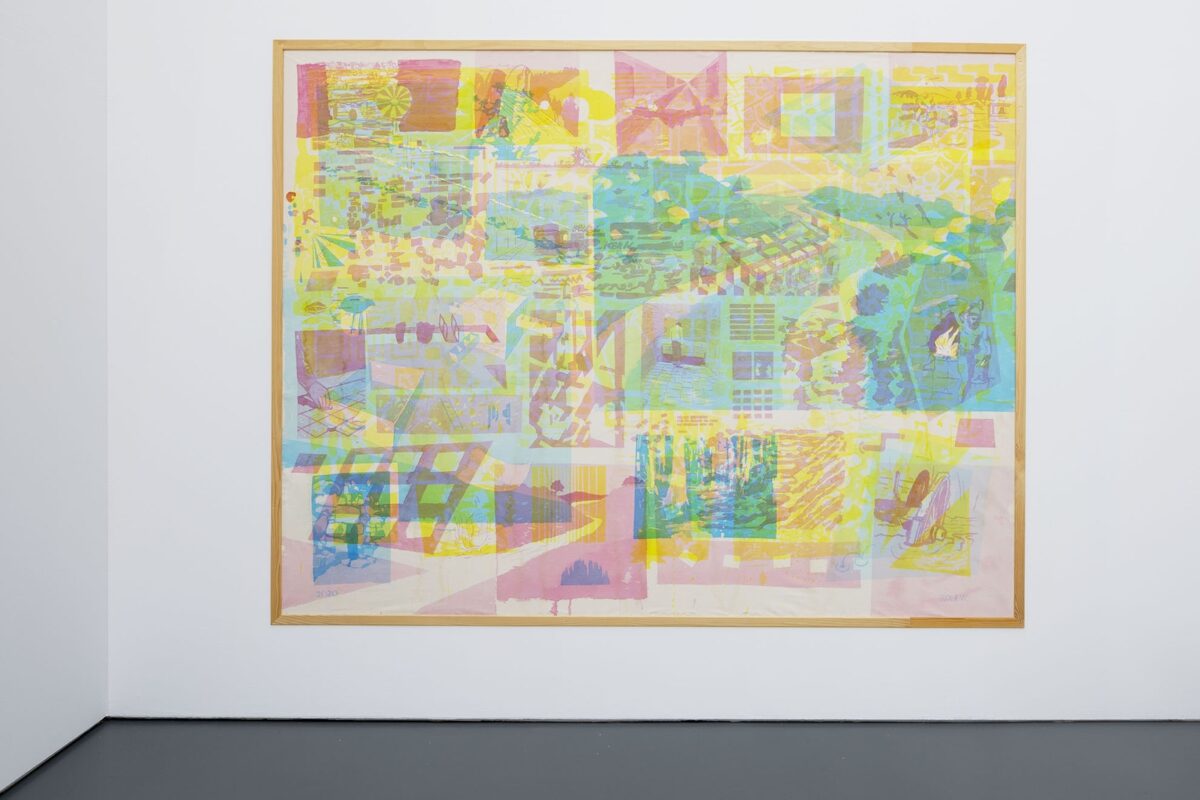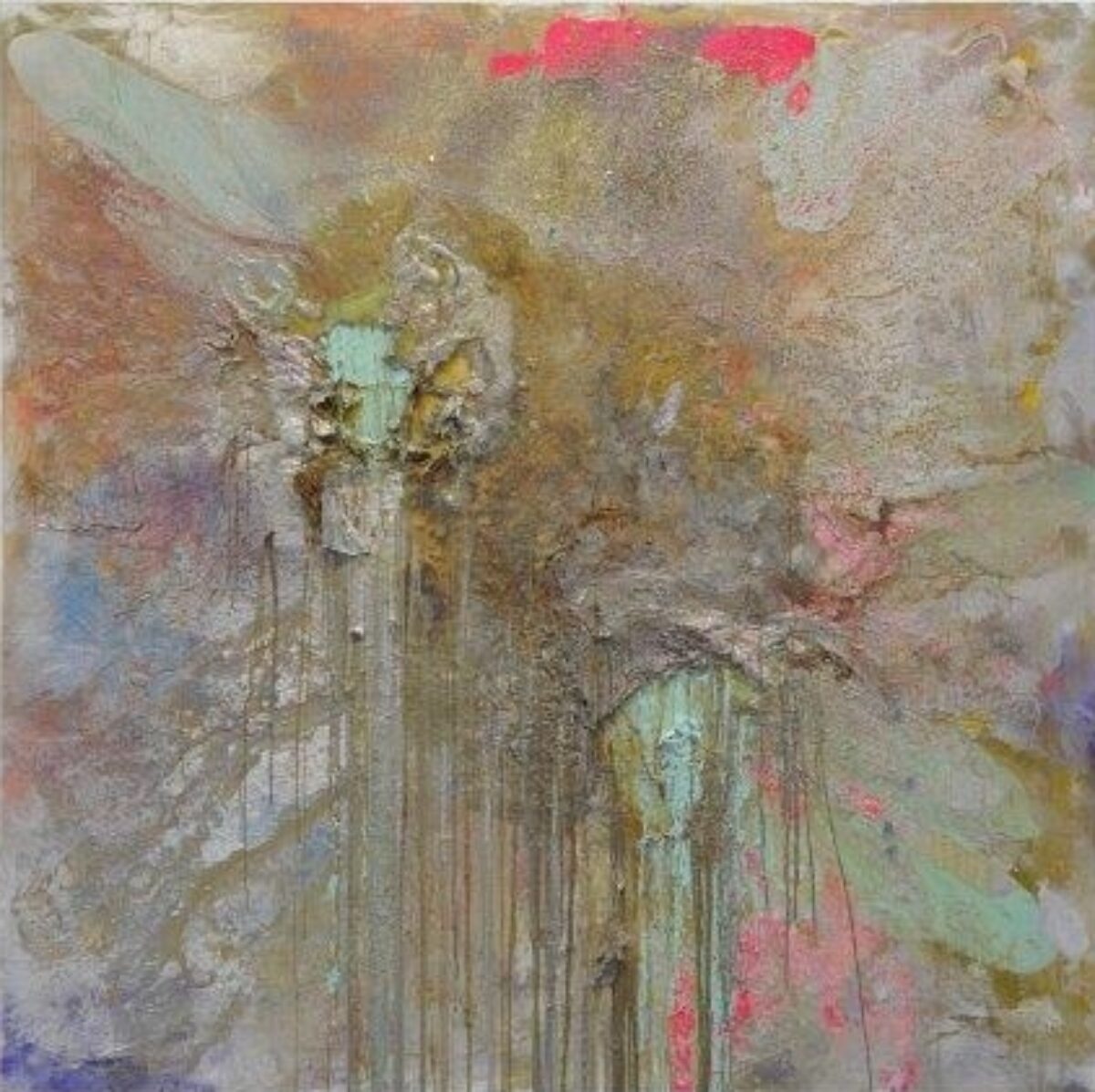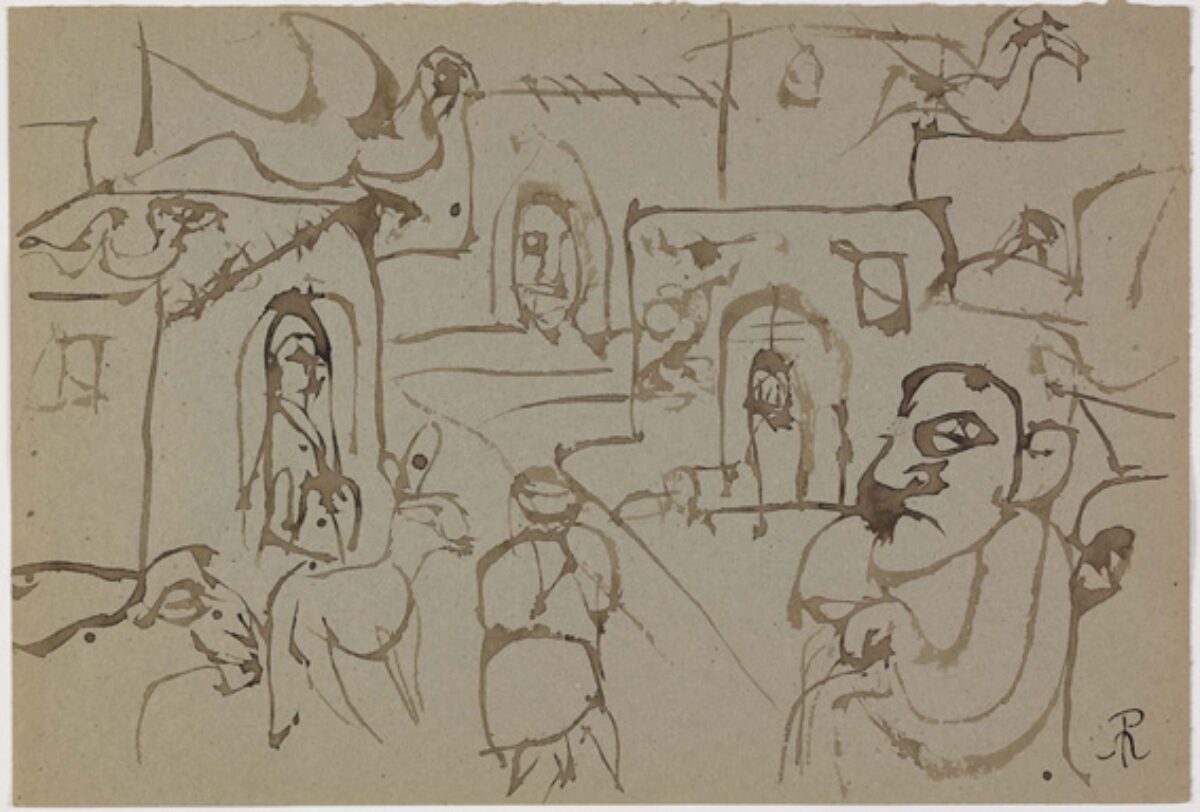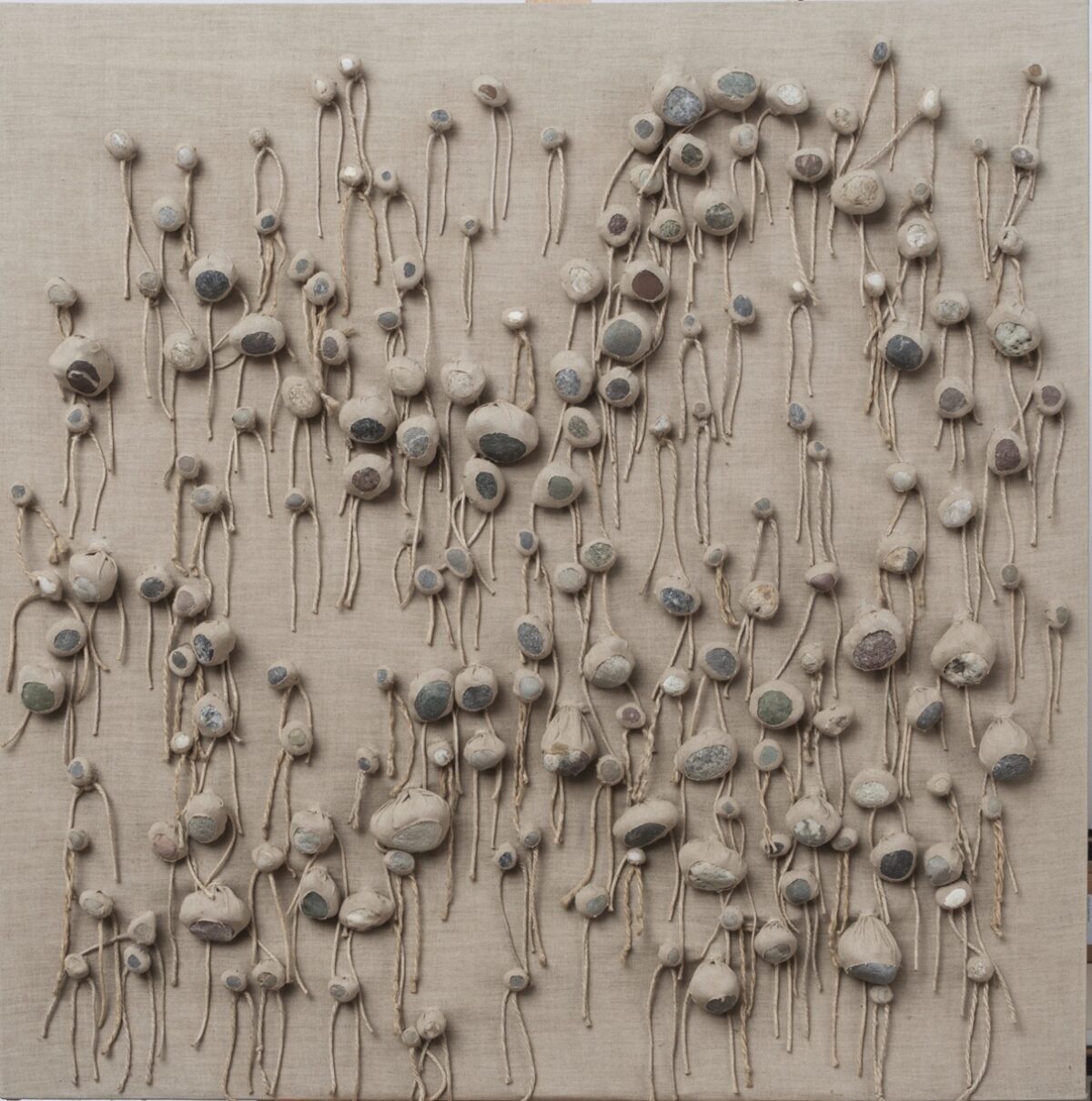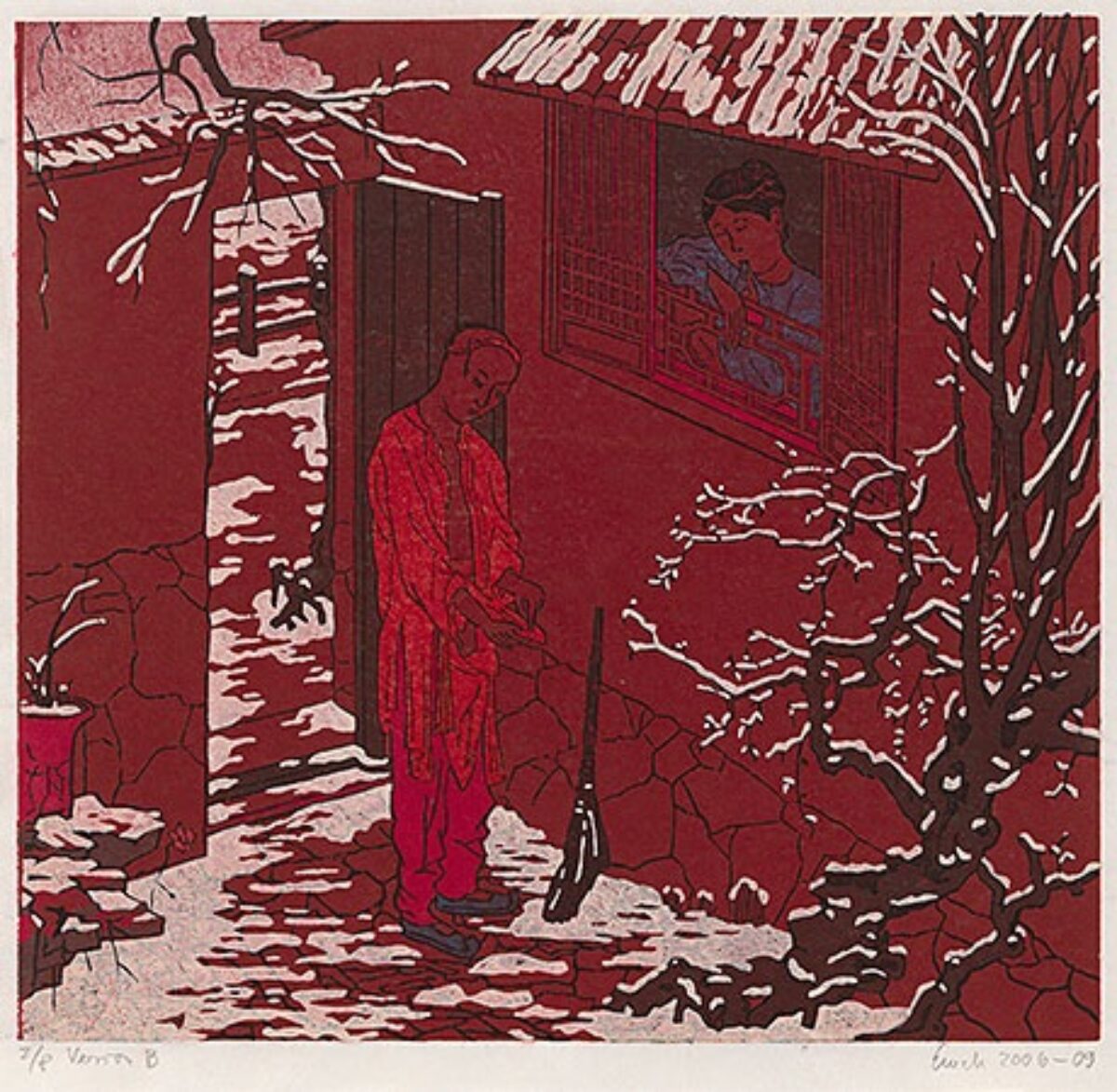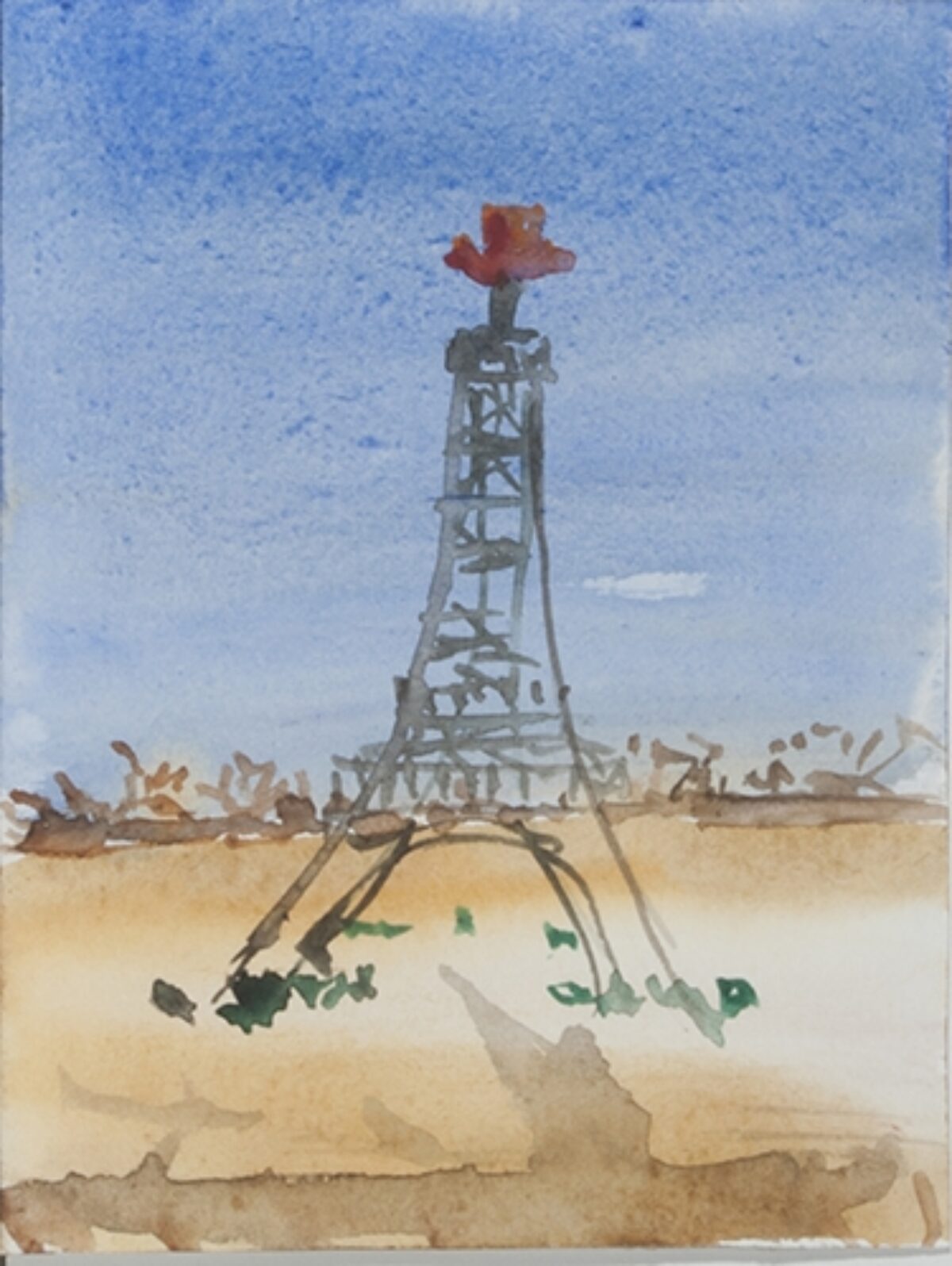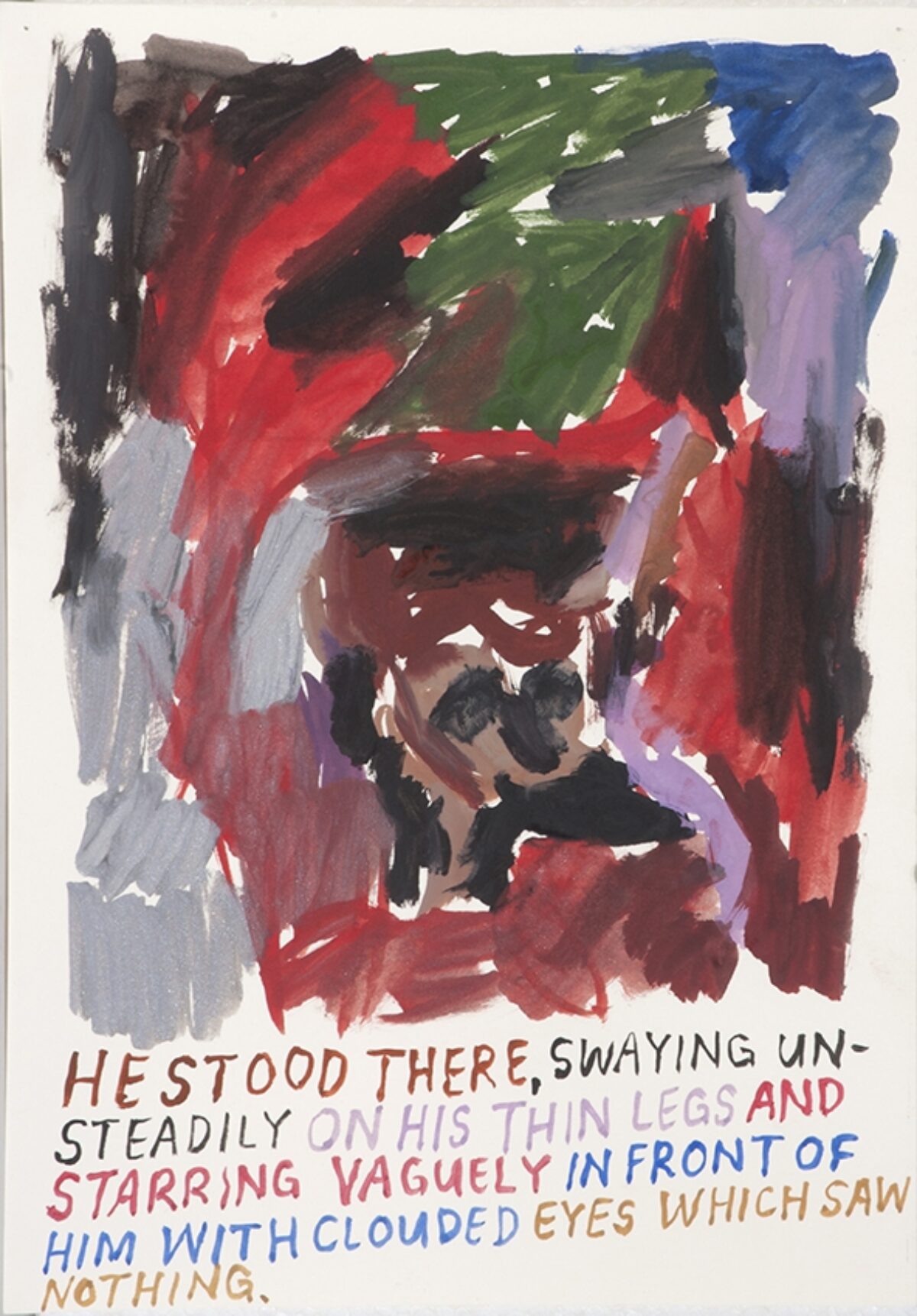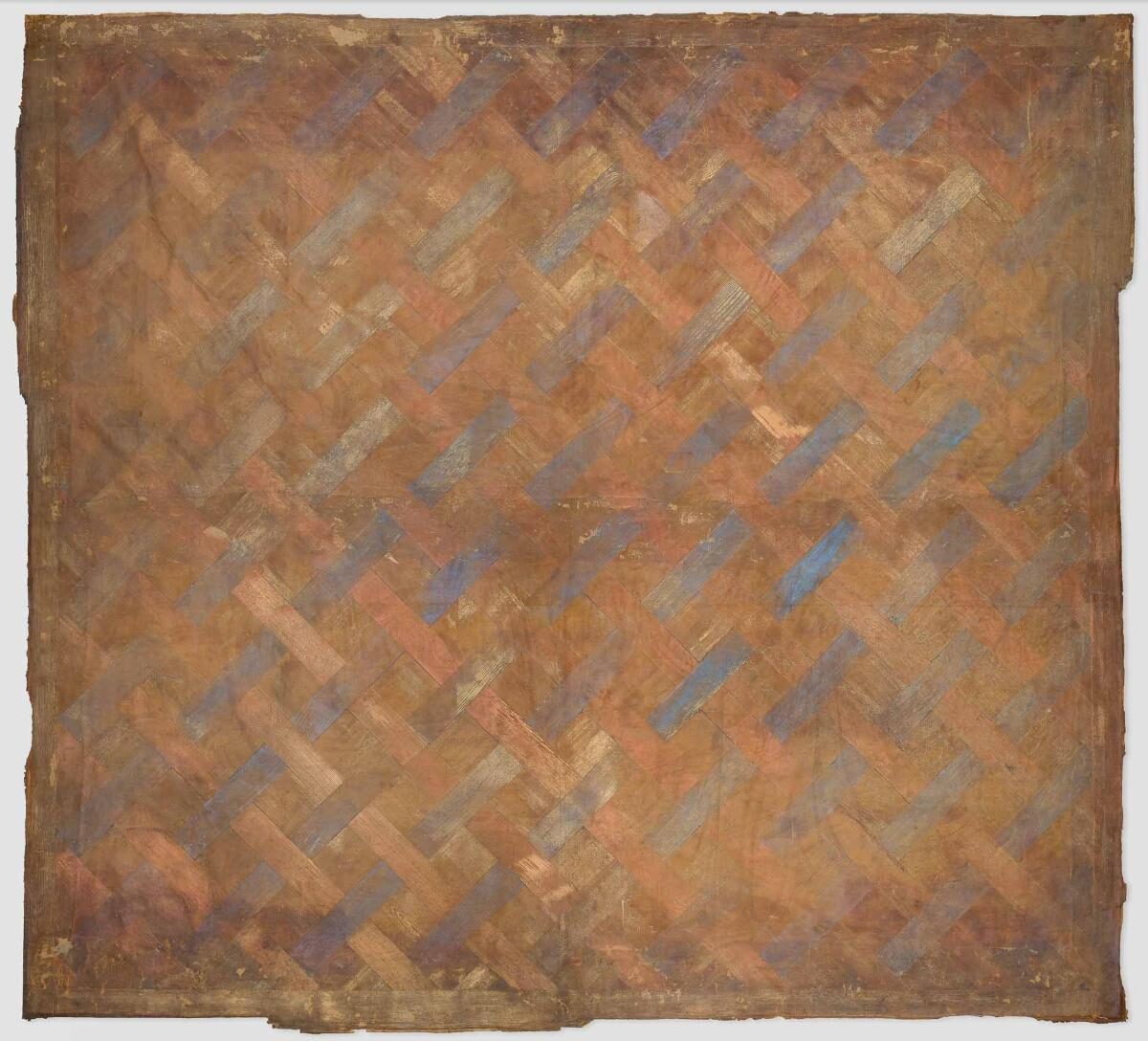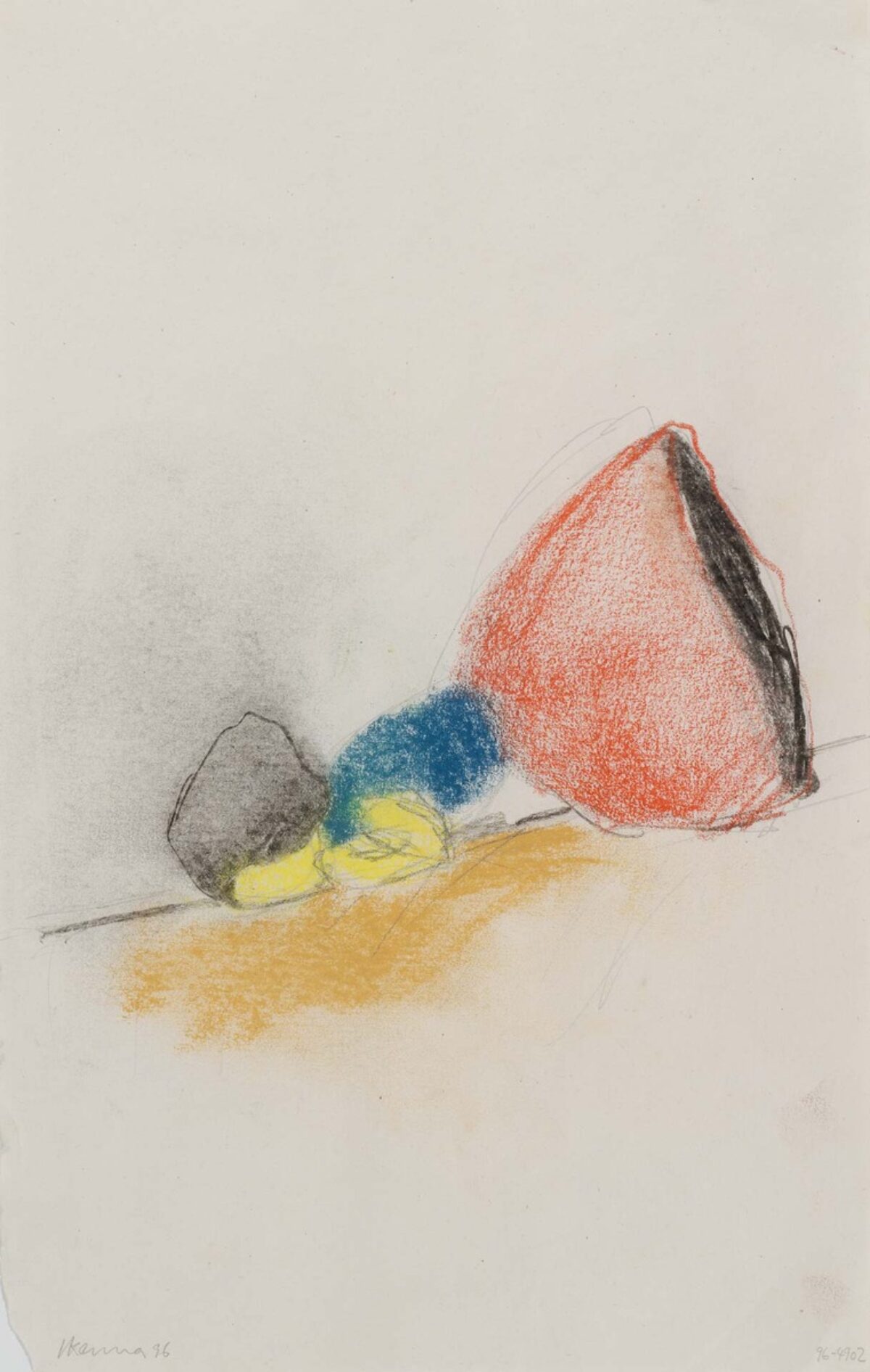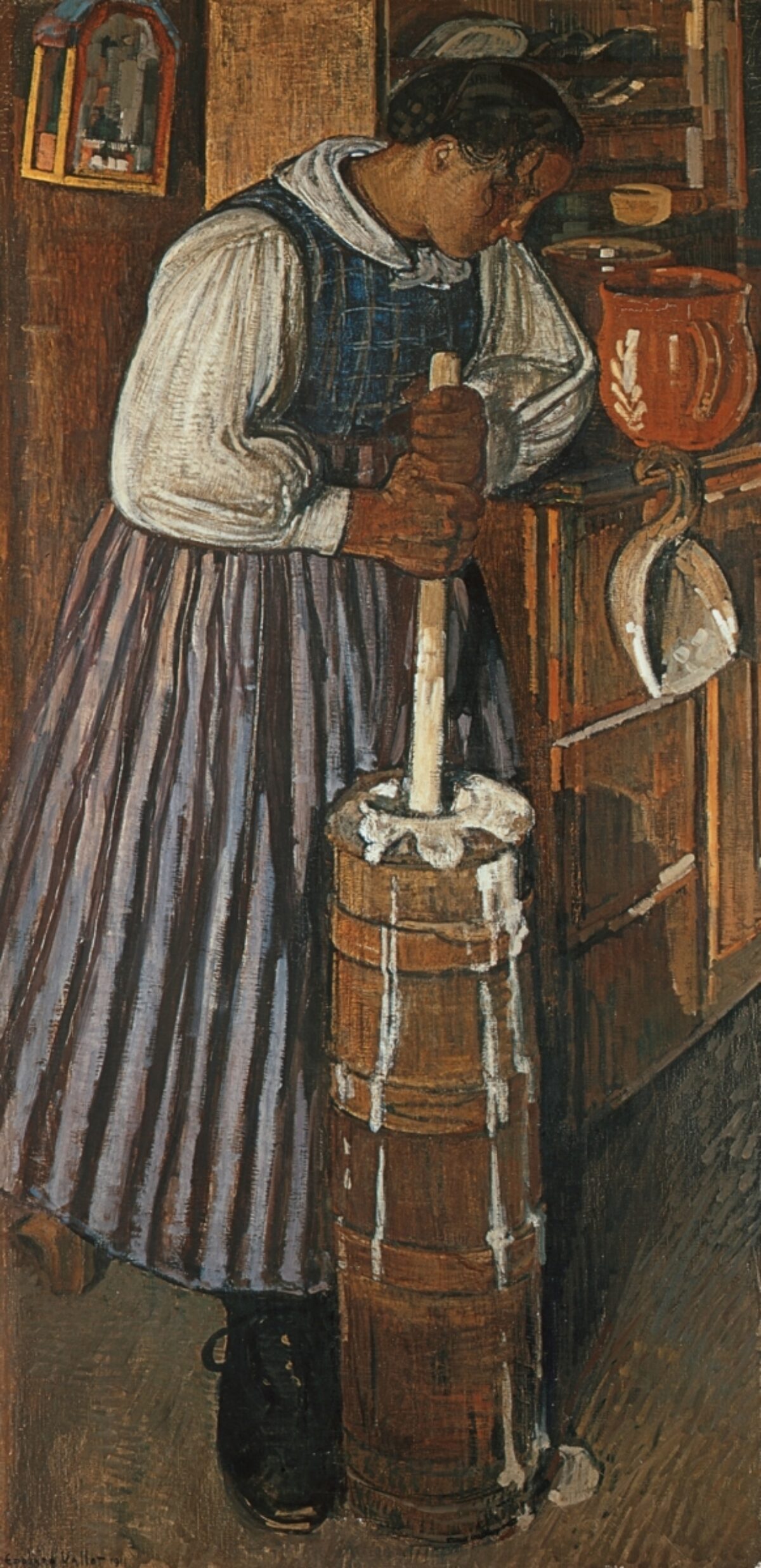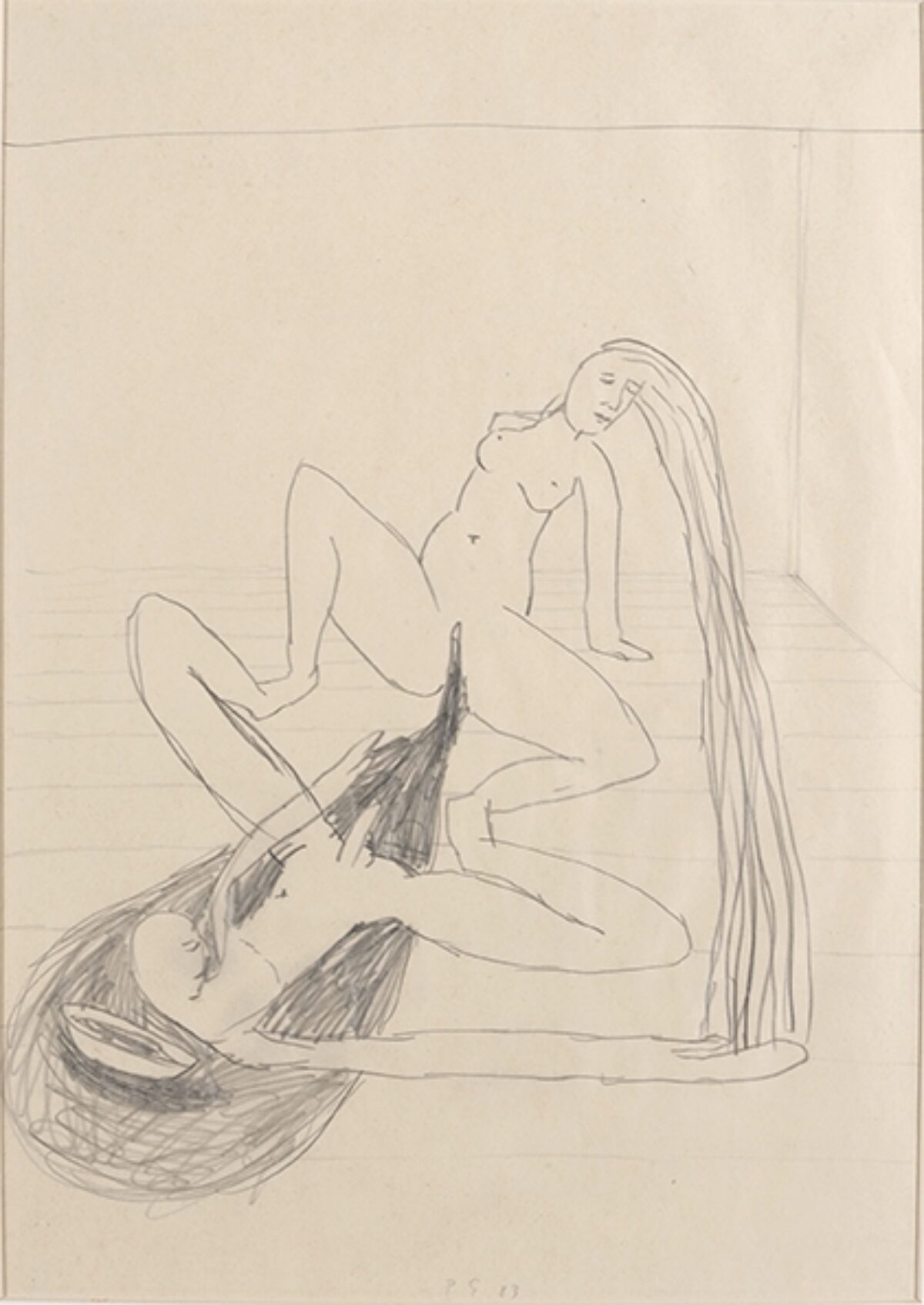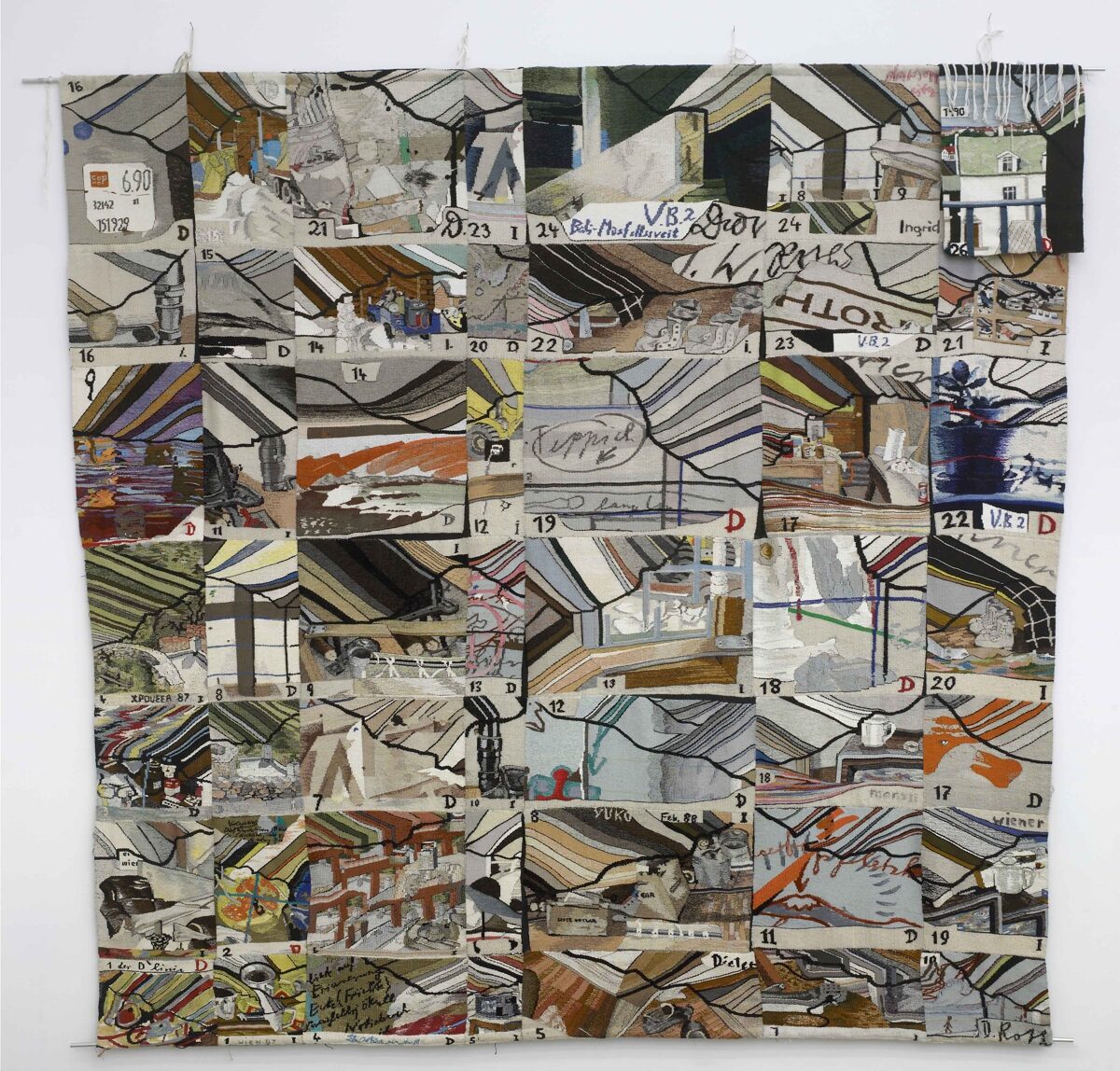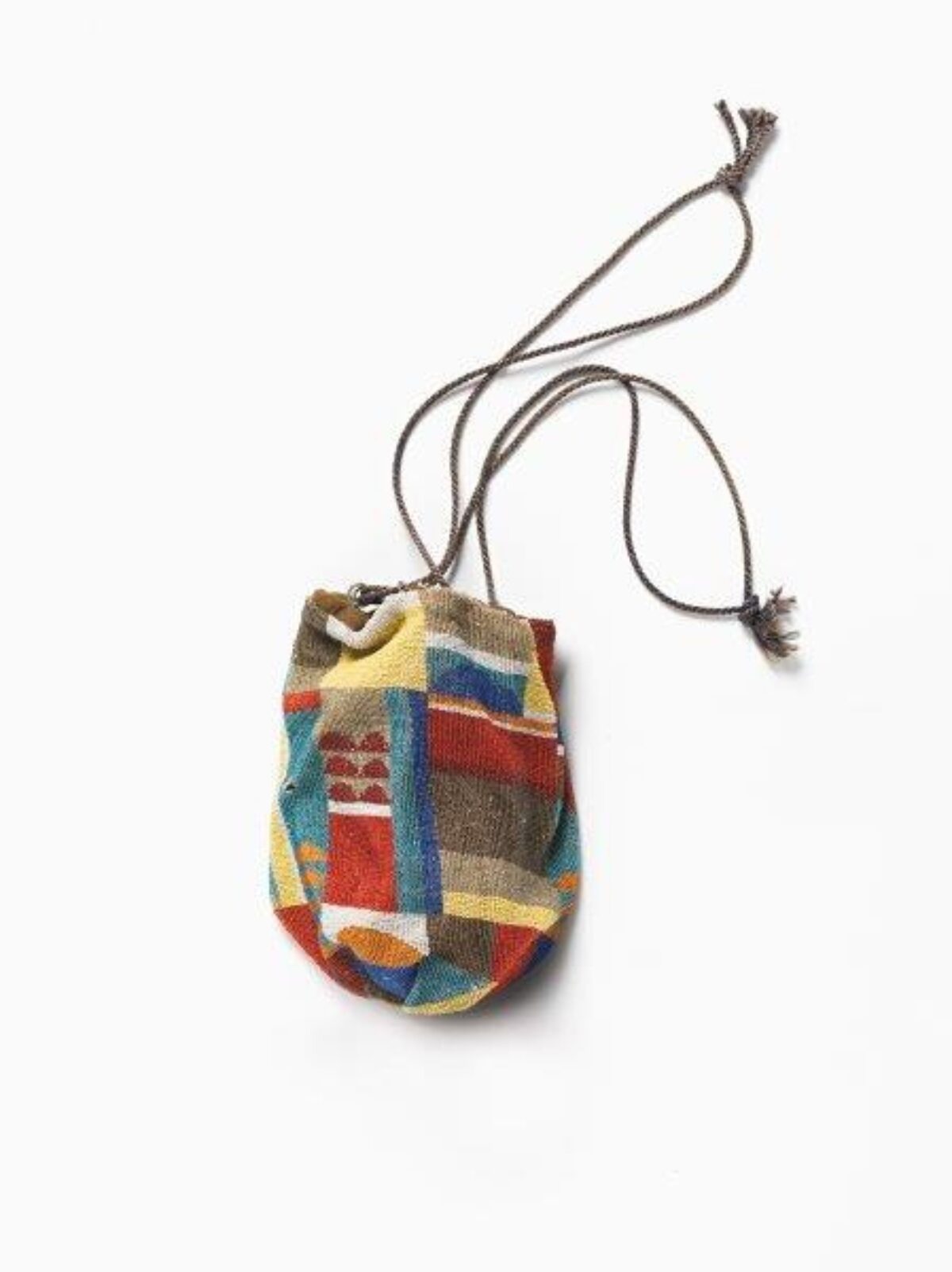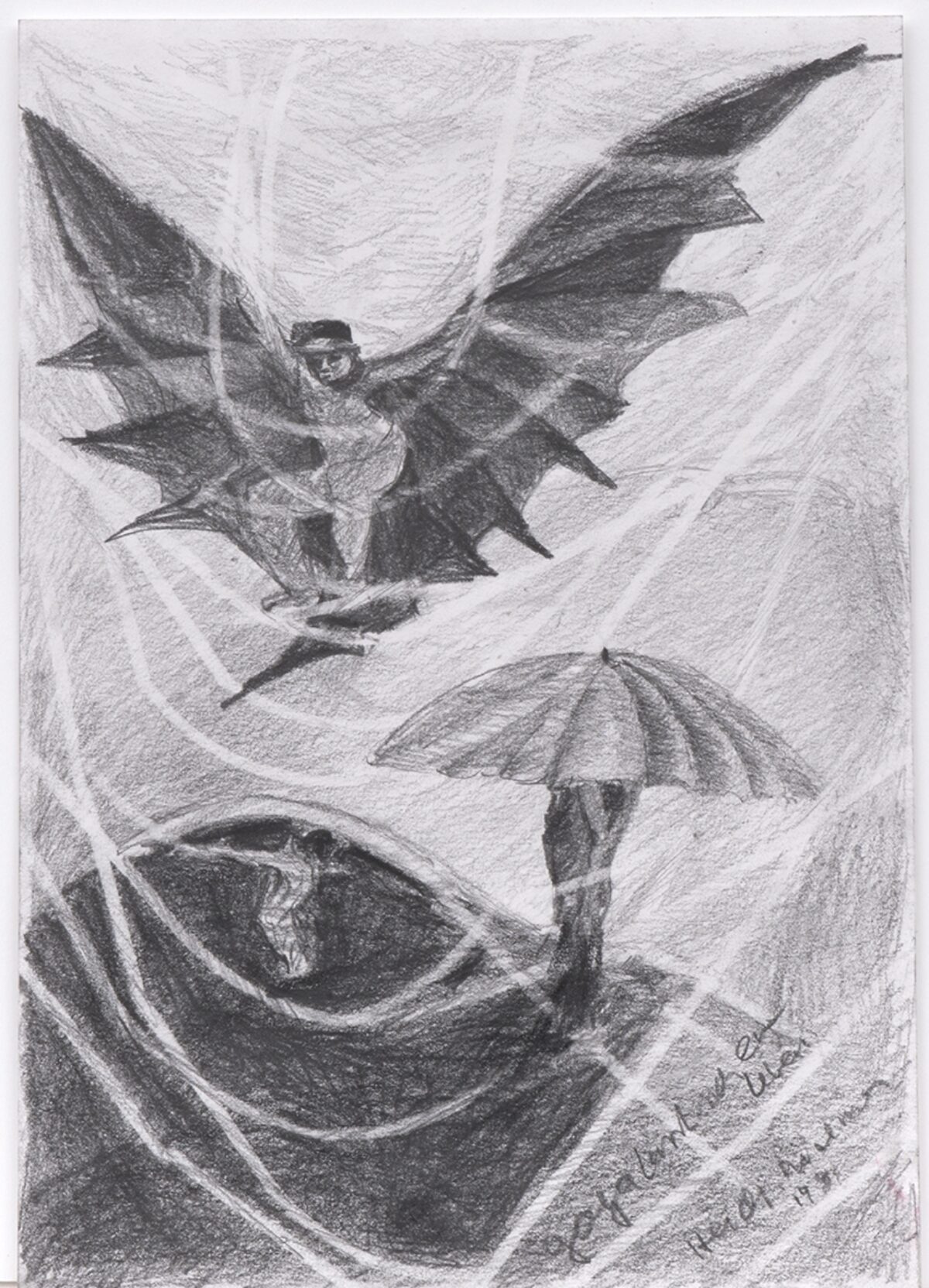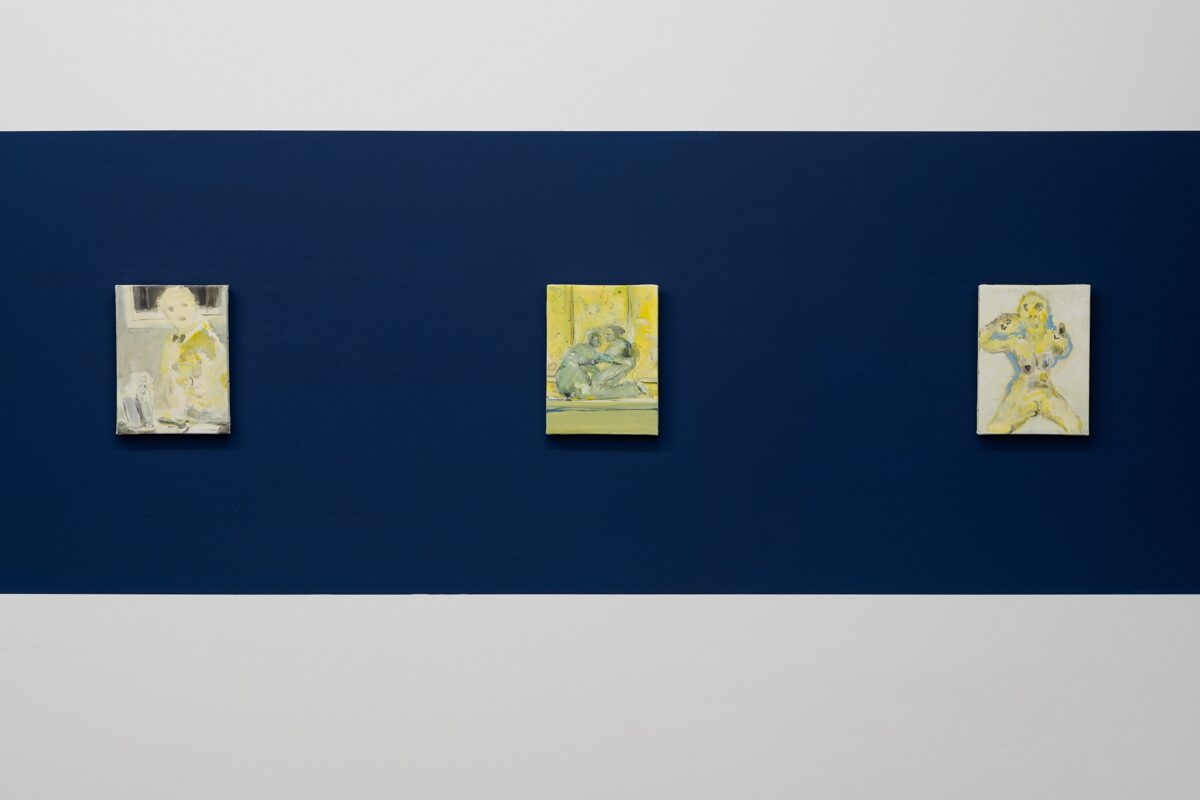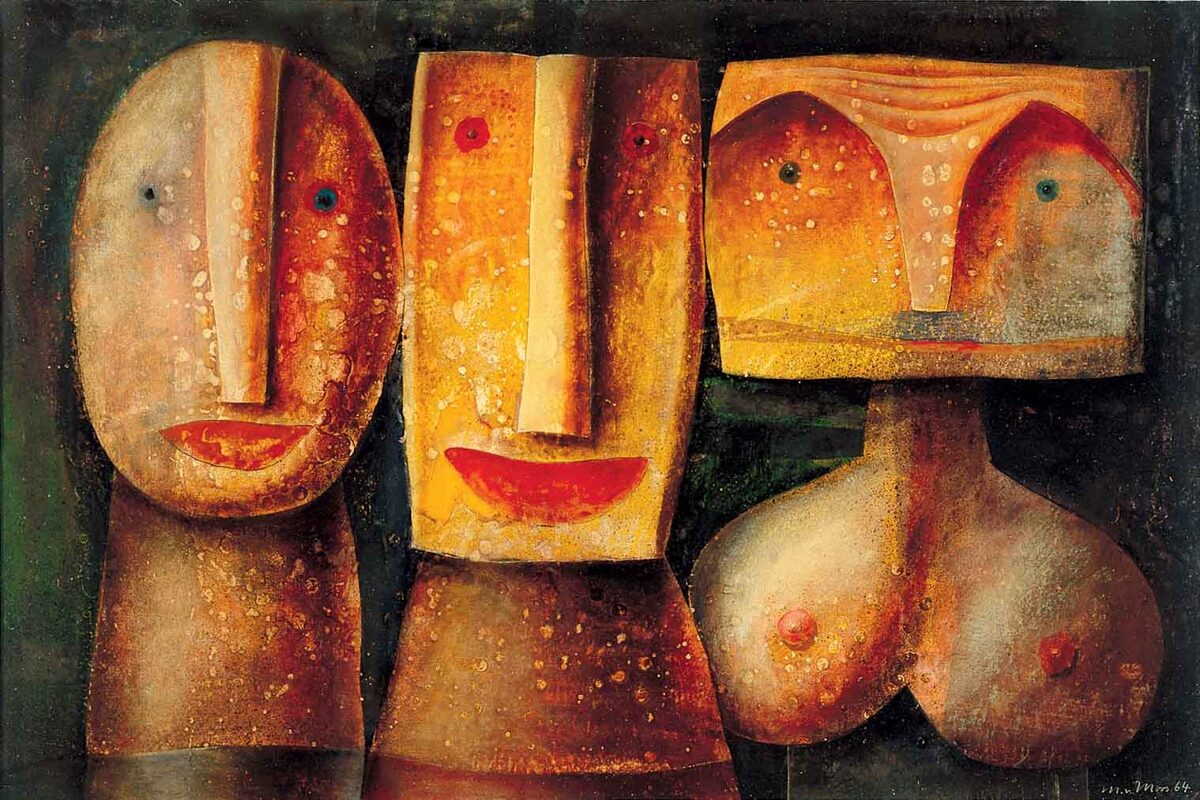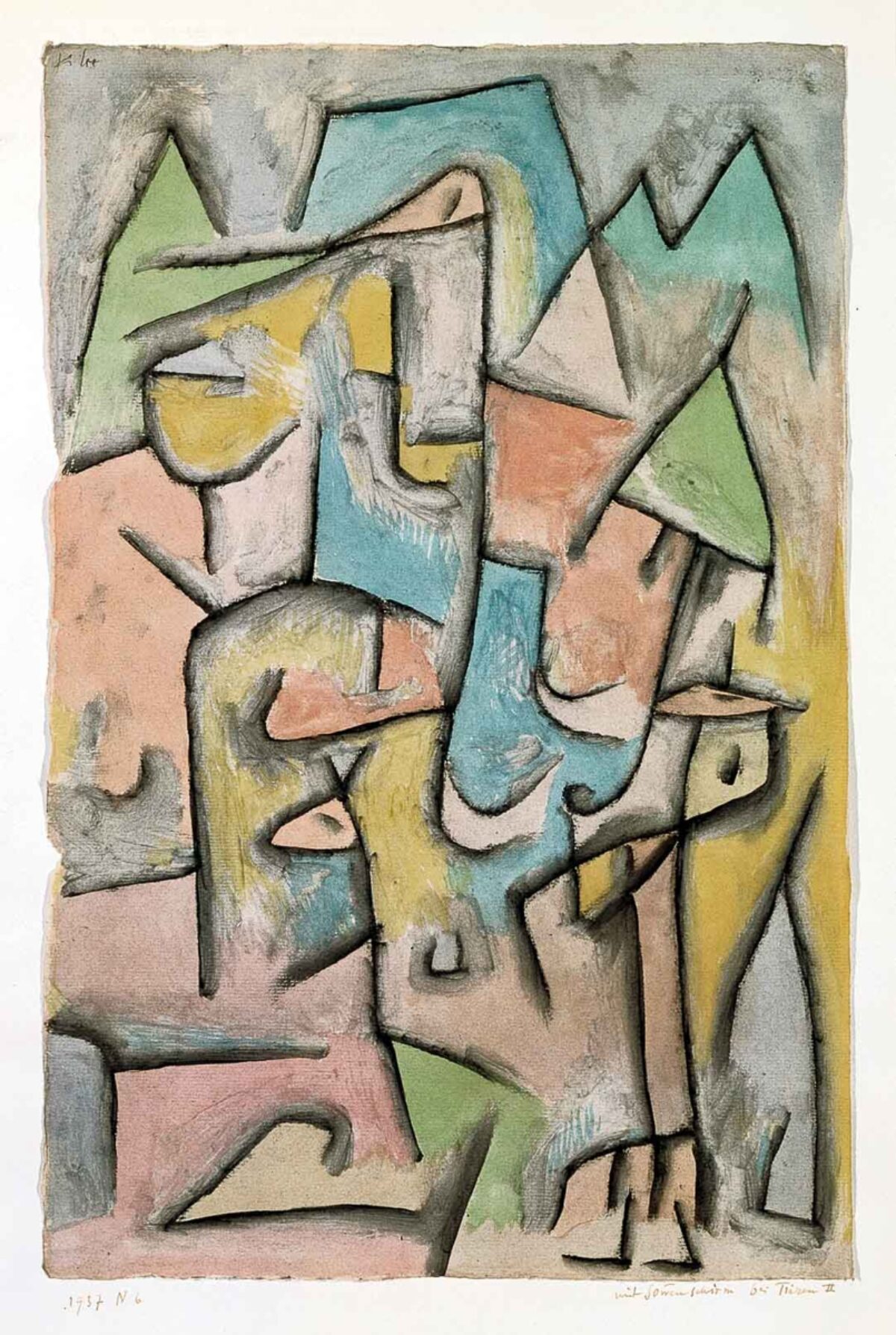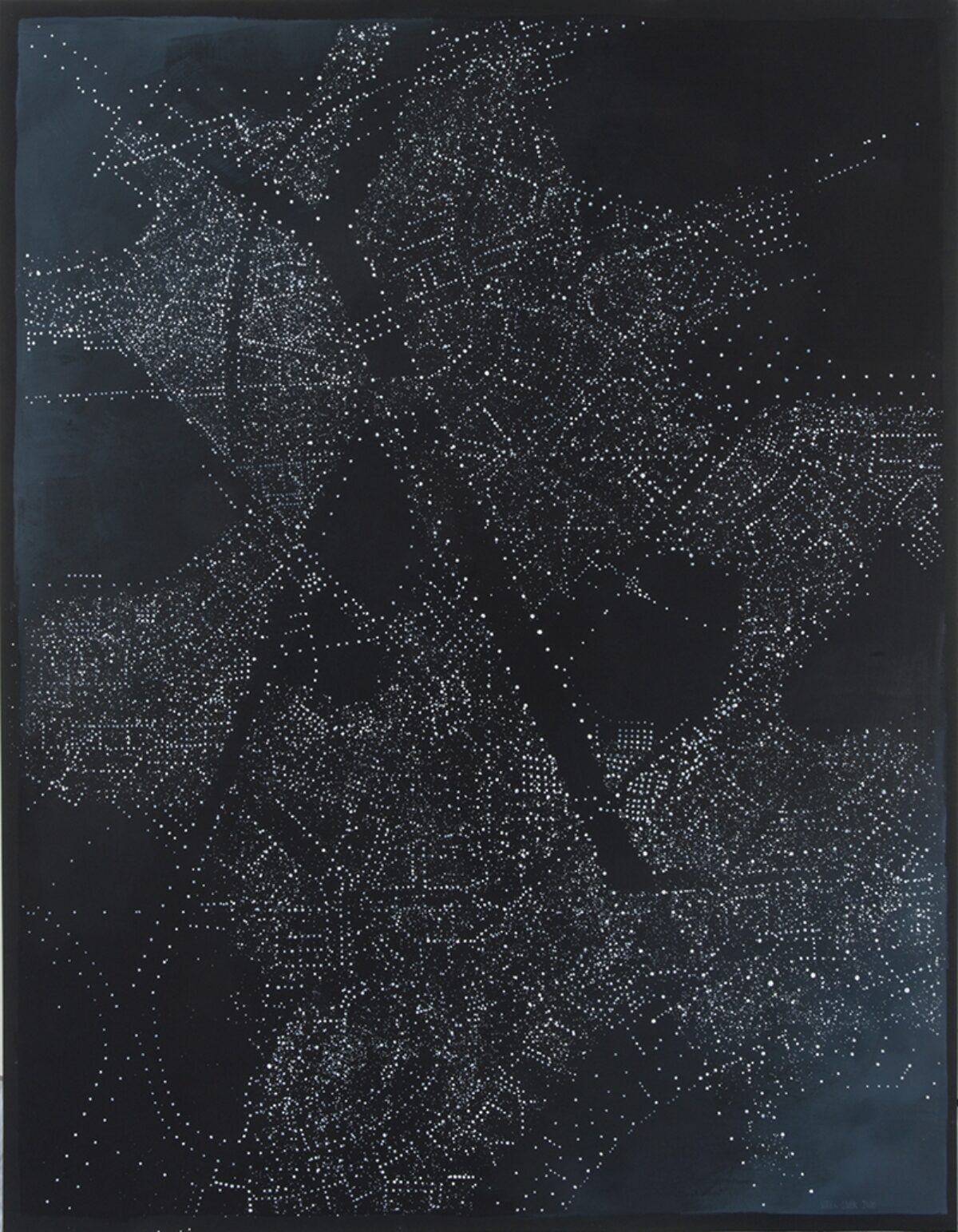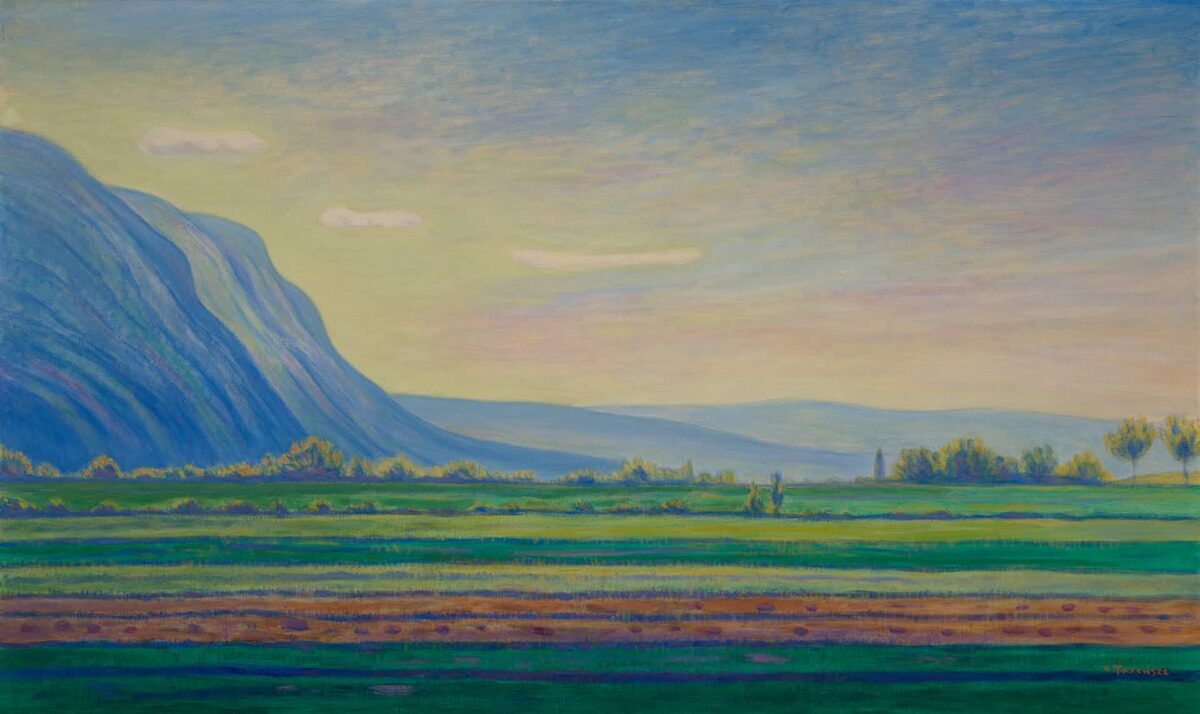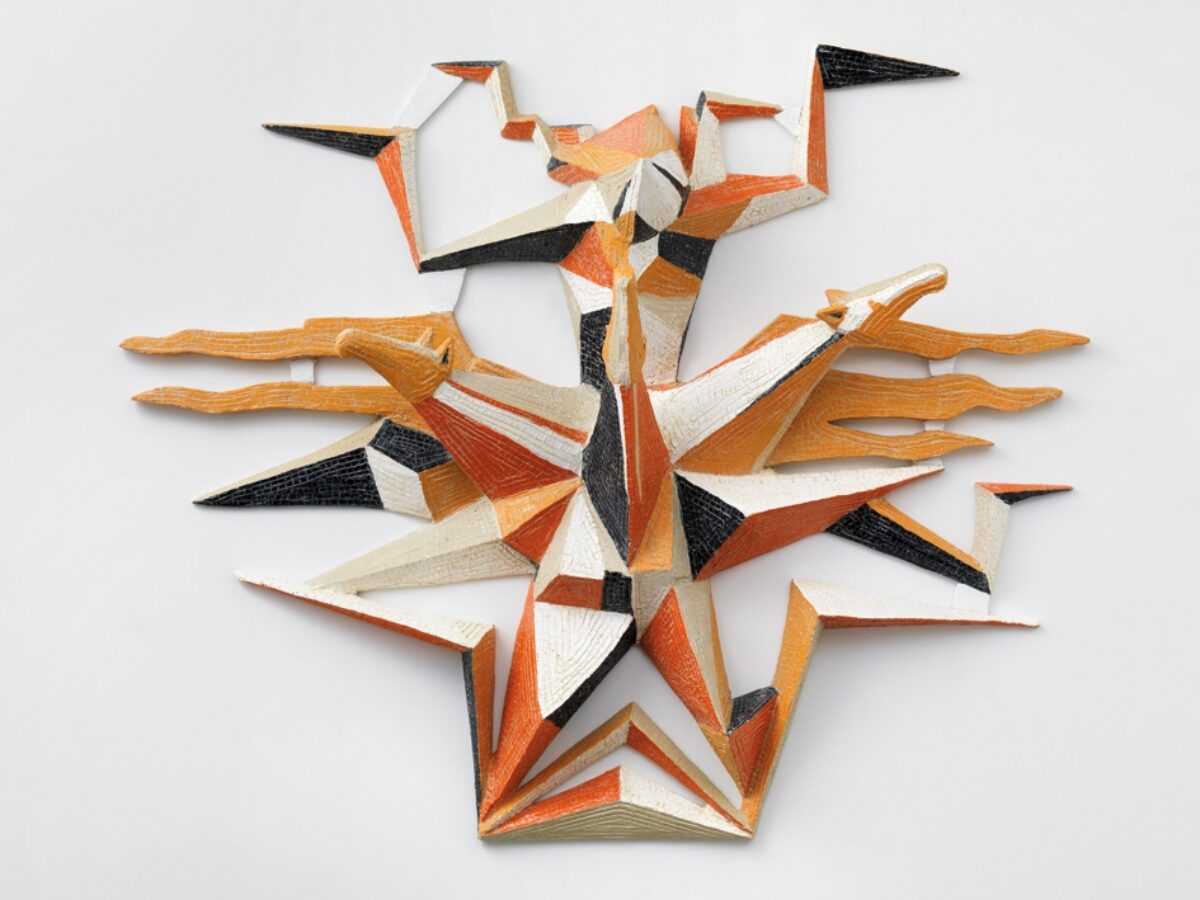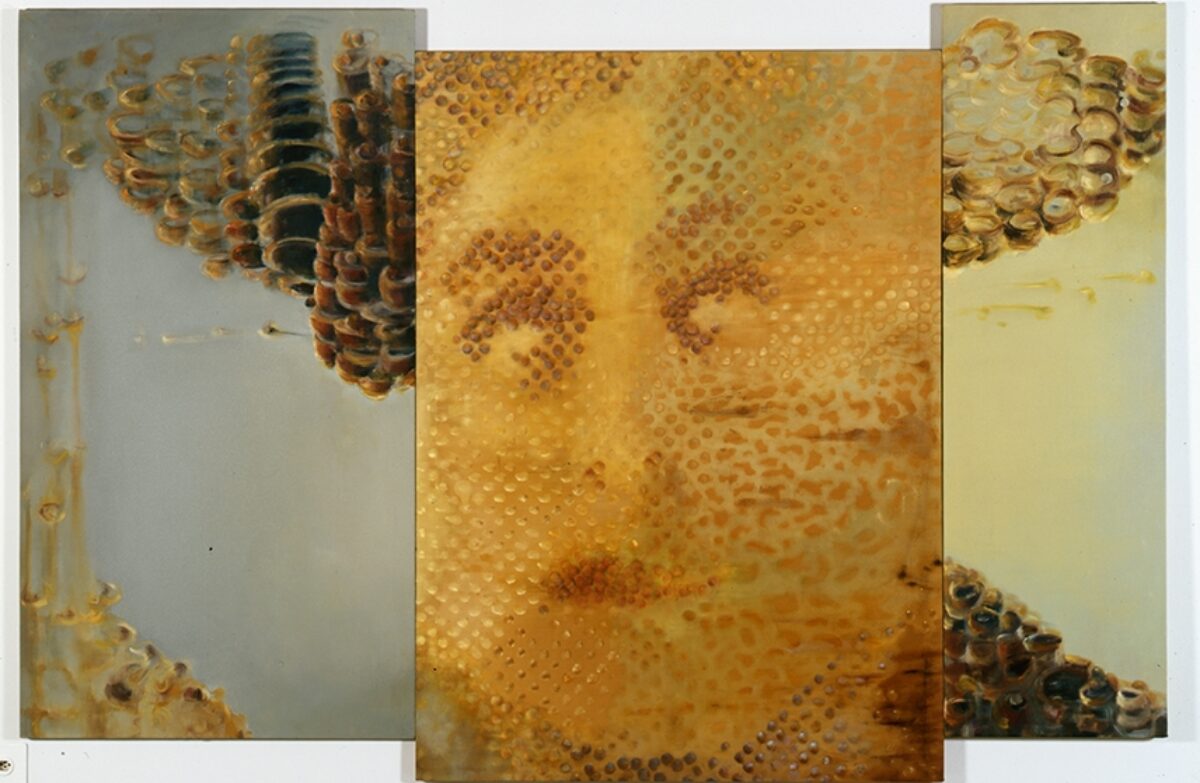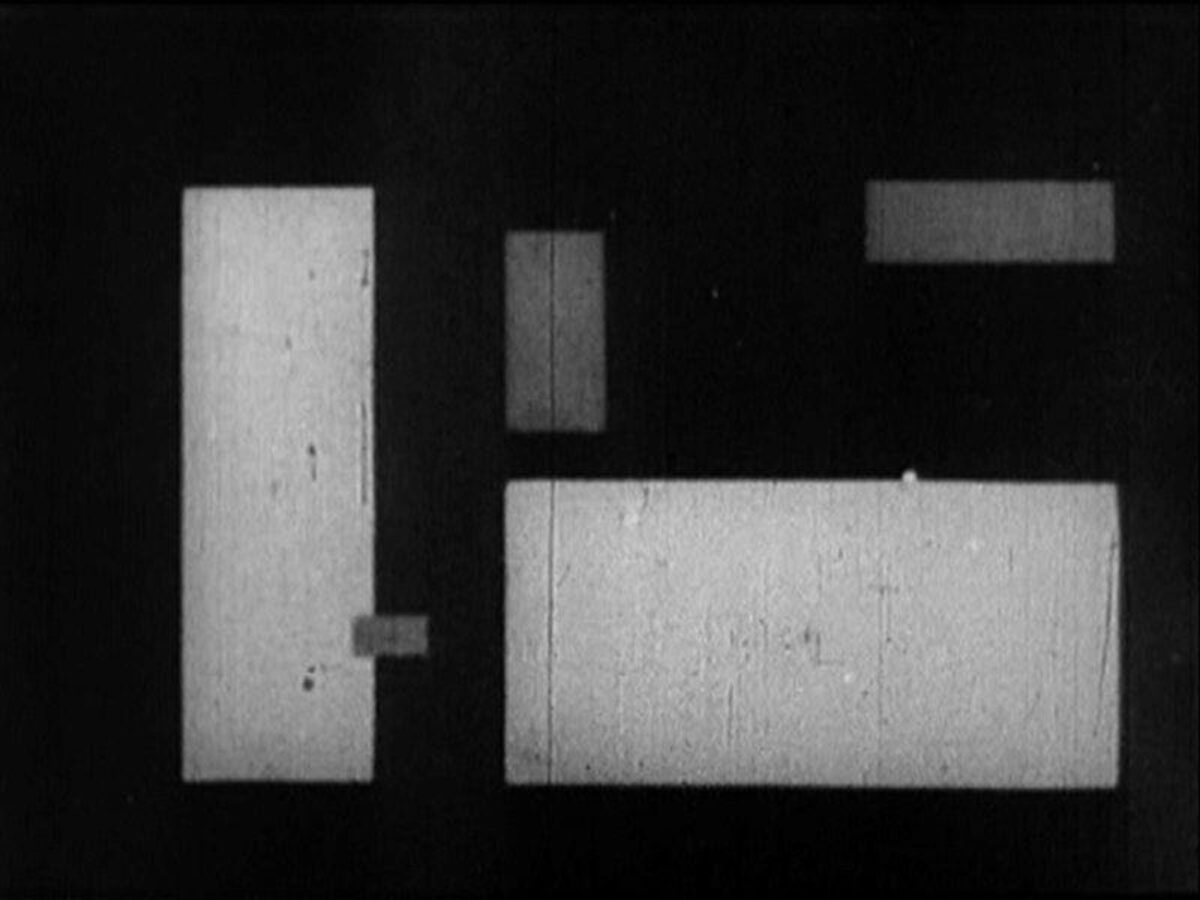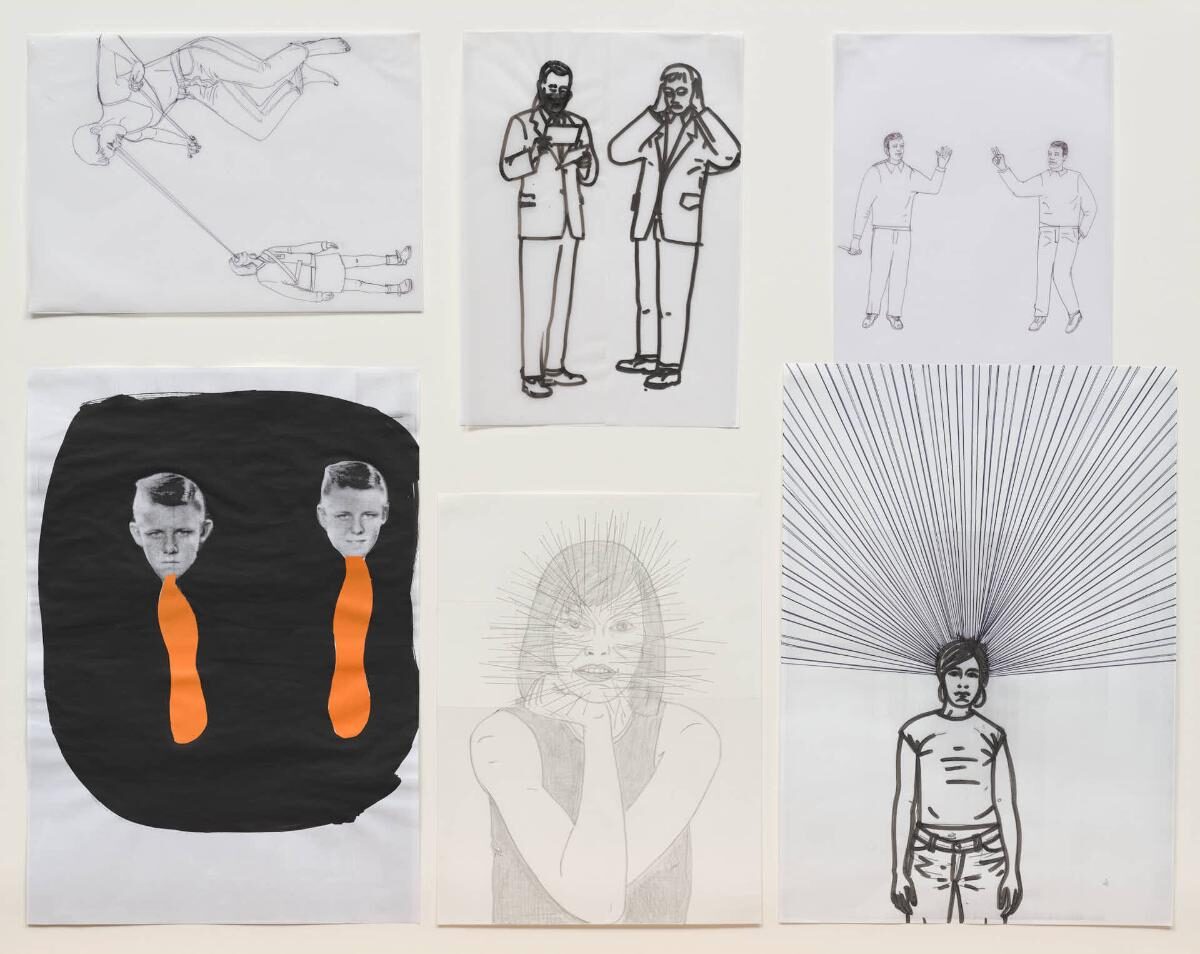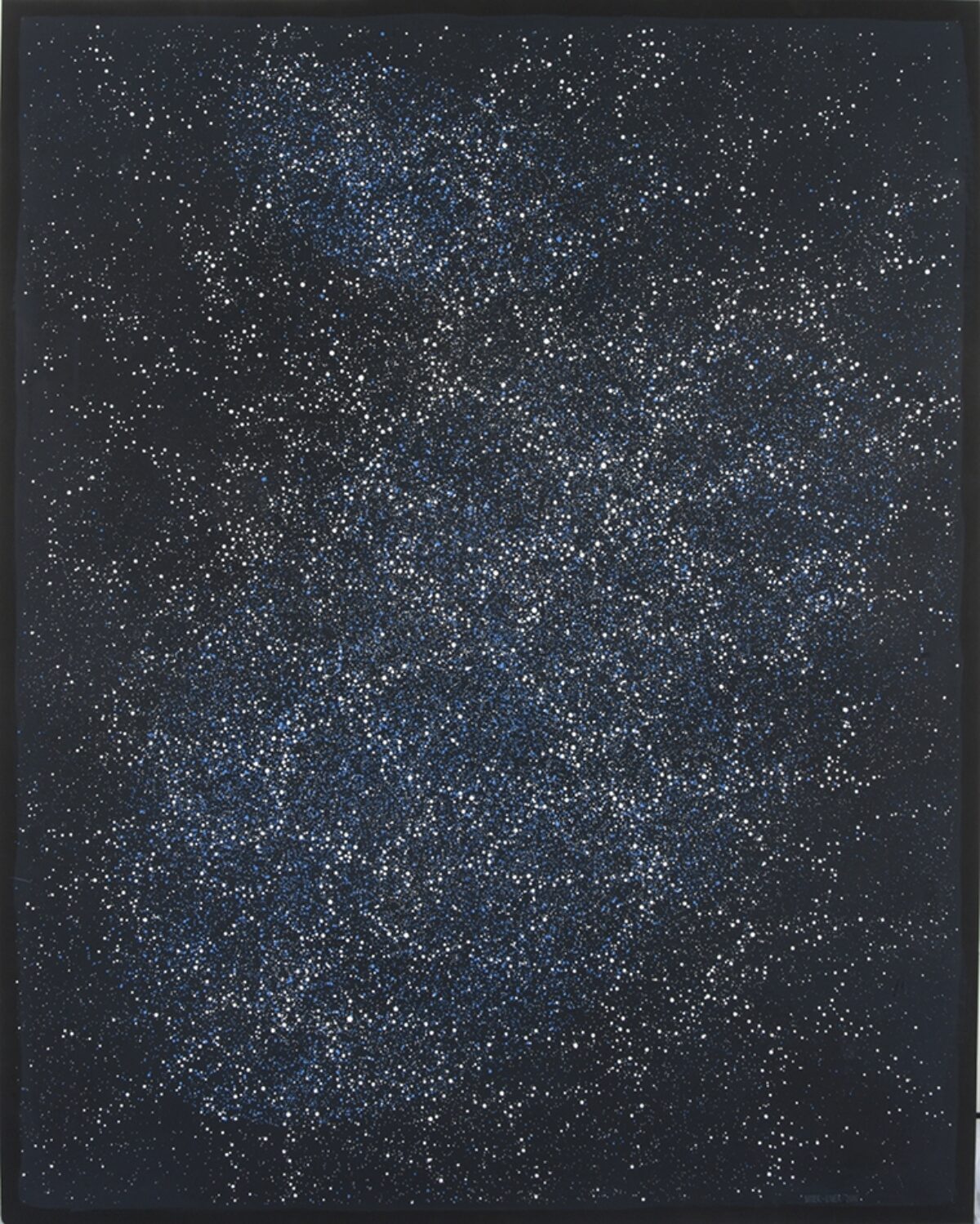
Öl auf Leinwand, 54 x 76 cm
English, french and italian version below
Ein wichtiger Schwerpunkt der Sammlung des Aargauer Kunsthauses bildet die umfangreiche Werkgruppe von Caspar Wolf (1735–1783). Sie lässt uns die Entwicklung der Malerei von der Aufklärung bis zur Moderne anhand eines für die Schweiz typischen Motivs nachvollziehen: Die Darstellung des Bergs erschliesst sich im Aargauer Kunsthaus ausgehend von Caspar Wolf über die heroischen Landschaften Alexandre Calames (1810–1864) und François Didays (1802–1877) bis zu Ferdinand Hodler (1853–1918).
Das Gemälde gibt den Eingang einer Höhle wieder, der von einer am unteren linken Bildrand sitzenden Figur – es handelt sich dabei um den Künstler selbst – zeichnerisch festgehalten wird. Die Öffnung in das Innere des Felsmassivs ist farblich in grauen und braunen Tönen genau festgehalten. Daneben zeigt sich ein weiterer Eingang von kleinerem Ausmass, an dessen rechter Seite ein Baum der Felswand emporwächst.
Im Konglomerat von Wolfs Alpenbildern kommen Höhlendarstellungen zwar nicht in hoher Anzahl vor, aber dafür in grosser Variation als Aussen- und Innenansichten. Mit diesen erregt er die besondere Aufmerksamkeit des Publikums. Der Überlieferung nach wurde der Maler von seinen Zeitgenossen „Höhlenwolf“ genannt. Wolfs Vorliebe für Höhlen scheint mit seinem geologischen Interesse zusammenzuhängen. Ihn drängt es, die Natur nicht nur abzubilden, sondern in sie einzudringen und den Aufbau der Erde unter der Oberfläche zu beobachten. Gemäss seiner empirischen Haltung, die Kunst und Wissen in sich vereint, versucht Wolf, die Natur nach ihren immanenten Gesetzen zu begreifen und sie in der Malerei zu rekonstruieren. In Wolfs Faszination für Höhlen wurde auch seine eigene schwermütige Seelenverfassung wiedererkannt, wobei der Sinn für geheimnisvolle, verborgene Naturorte charakteristisch ist für die vorromantische Gestimmtheit des ausgehenden 18. Jahrhunderts.
Karoliina Elmer
***
The extensive body of work by Caspar Wolf (1735–1783) is an important focus of the collection of the Aargauer Kunsthaus. It allows us to trace the development of painting from the Enlightenment to modernism based on a subject typical of Switzerland: the history of the depiction of mountains reveals itself at the Aargauer Kunsthaus beginning with Caspar Wolf and continuing via the heroic landscapes of Alexandre Calames (1810–1864) and François Didays ( 1802–1877) to Ferdinand Hodler (1853–1918).
Wolf’s painting shows the entrance to a cave, which is captured in a drawing by a figure seated at the lower left edge of the image. This is the artist himself. The opening into the interior of the rock massif is precisely depicted in shades of grey and brown. Another, smaller-sized entrance can be seen beside it, flanked on the right side by a tree growing against the rock face.
Depictions of caves are not too common in Wolf’s Alpine paintings, but they are very varied and include both exterior and interior views. The cave paintings, in particular, captured the public’s attention. According to legend, the painter was dubbed “Höhlenwolf” (“cave wolf”) by his contemporaries. Wolf’s predilection for caves seems to have been linked to his geological interest. He felt the urge to not only depict nature, but penetrate it and observe the structure of the earth beneath the surface. In keeping with his empirical stance, in which art and knowledge were one, Wolf sought to understand nature based on its intrinsic laws and reconstruct it in painting. Wolf’s fascination with caves apparently also reflected his melancholy frame of mind, although the appreciation of mysterious, hidden natural places is characteristic of the pre-romantic spirit of the late eighteenth century.
Karoliina Elmer
***
Le vaste ensemble d’œuvres de Caspar Wolf (1735-1783) constitue un maillon essentiel des collections de l’Aargauer Kunsthaus. Il nous permet de suivre l’évolution de la peinture depuis l’époque des Lumières jusqu’à l’époque moderne à partir d’un motif typiquement suisse: à l’Aargauer Kunsthaus, la représentation de la montagne s’étend de Caspar Wolf à Ferdinand Hodler (1853-1918), en passant par les paysages héroïques d’Alexandre Calame (1810-1864) et de François Diday (1802-1877).
Le tableau décrit l’entrée d’une grotte que dessine un personnage assis en bas à gauche de la toile – il s’agit en fait de l’artiste en personne. L’ouverture vers l’intérieur du massif rocheux est rendue avec précision dans des tons gris et bruns. On distingue à côté une autre entrée de taille plus petite avec, à sa droite, un arbre qui se dresse le long de la paroi rocheuse.
Dans le conglomérat des tableaux alpins de Wolf, les représentations de grottes, bien que peu nombreuses, présentent pour autant une grande variété de vues extérieures et intérieures lui permettant d’attirer tout particulièrement l’attention du public. Selon la légende, ses contemporains appelaient le peintre «le loup des grottes». La prédilection de Wolf pour les grottes semble provenir de son intérêt pour la géologie. Il ressent le besoin non seulement de reproduire la nature mais aussi d’y pénétrer et d’observer la structure de la terre sous la surface. De par sa posture empirique qui réunit en elle art et savoir, Wolf tente de comprendre la nature d’après ses lois immanentes et de la reconstruire dans la peinture. Dans la fascination de Wolf pour les grottes, on a aussi discerné son propre penchant à la mélancolie, l’attrait pour des lieux naturels mystérieux, dissimulés étant toutefois caractéristique de l’état d’esprit préromantique en cette fin du XVIIIe siècle.
Karoliina Elmer
***
Il cospicuo gruppo di opere di Caspar Wolf (1735-1783) appartenenti all’Aargauer Kunsthaus costituisce un nucleo di particolare rilievo in seno alla collezione. L’assieme di lavori consente di ripercorrere gli sviluppi della pittura dall’Illuminismo all’epoca moderna in base a un motivo tipicamente svizzero: la rappresentazione della montagna. Nella collezione argoviese l’evoluzione del tema è documentata da Caspar Wolf ai paesaggi eroici di Alexandre Calames (1810-1864) e François Didays (1802-1877), fino a Ferdinand Hodler (1853-1918).
“Eingang zur westlichen Beatushöhle mit dem Efeubaum” (L’ingresso verso la grotta occidentale di San Beato con l’albero di edera) raffigura l’ingresso di una grotta, con una figura seduta in basso a sinistra – si tratta di una controfigura dell’artista – intenta a disegnare la grotta. La cavità rocciosa è dipinta con accurata precisione in tonalità grigio-brune. Verso destra si trova un’altra grotta, più piccola, con un albero che svetta sul lato destro della parete rocciosa.
Nel contesto dei dipinti alpini di Wolf, le rappresentazioni di grotte sono numericamente limitate, ma molto variate sul piano compositivo, con vedute sia esterne sia interne. Con questo gruppo di lavori, Wolf attira l’attenzione del pubblico, al punto da essere soprannominato “Höhlenwolf” (lupo delle grotte) dai suoi contemporanei, secondo quanto riferiscono le fonti. La sua predilezione per le grotte sembra riconducibile al suo interesse per la geologia. Wolf desidera non solo raffigurare la natura, ma anche penetrarla per osservare la stratificazione della terra al di sotto della sua superficie. In linea con la sua attitudine empirica, che coniuga arte e scienza, Wolf tenta di capire la natura in base alle sue leggi immanenti e di ricostruirla attraverso il linguaggio pittorico. La sua fascinazione per le grotte è stata interpretata anche in relazione al suo stato d’animo malinconico. La propensione per siti naturali nascosti e misteriosi è peraltro distintiva del clima preromantico di fine Settecento.
Karoliina Elmer
